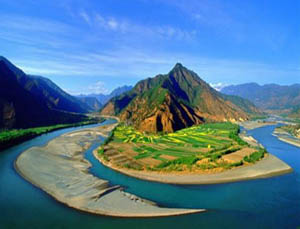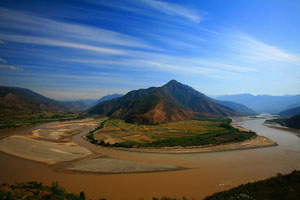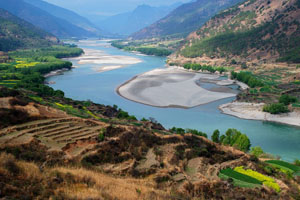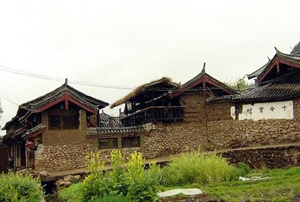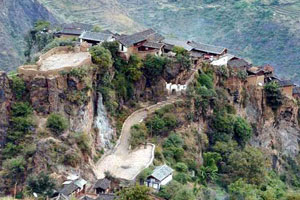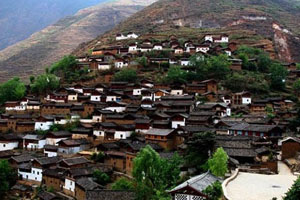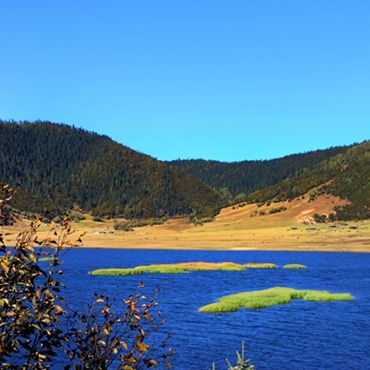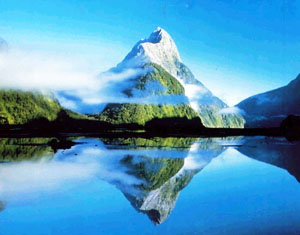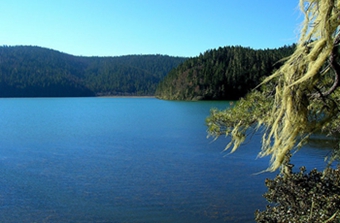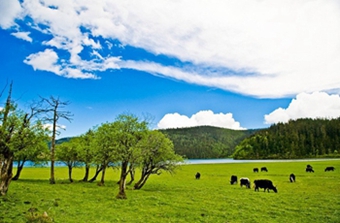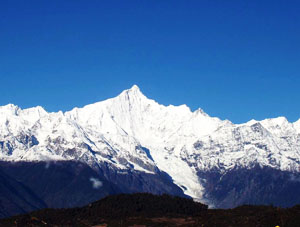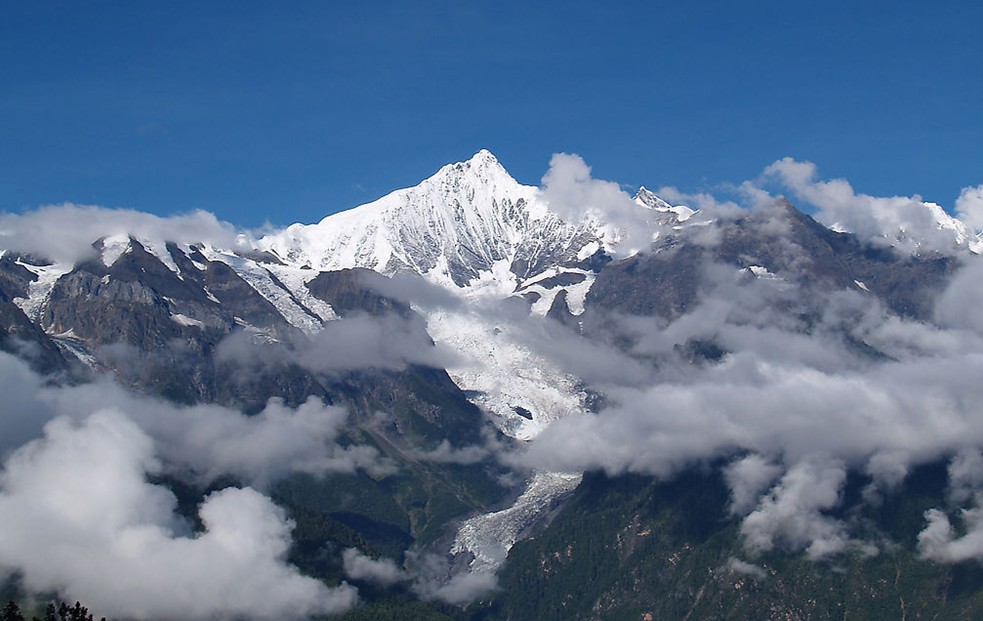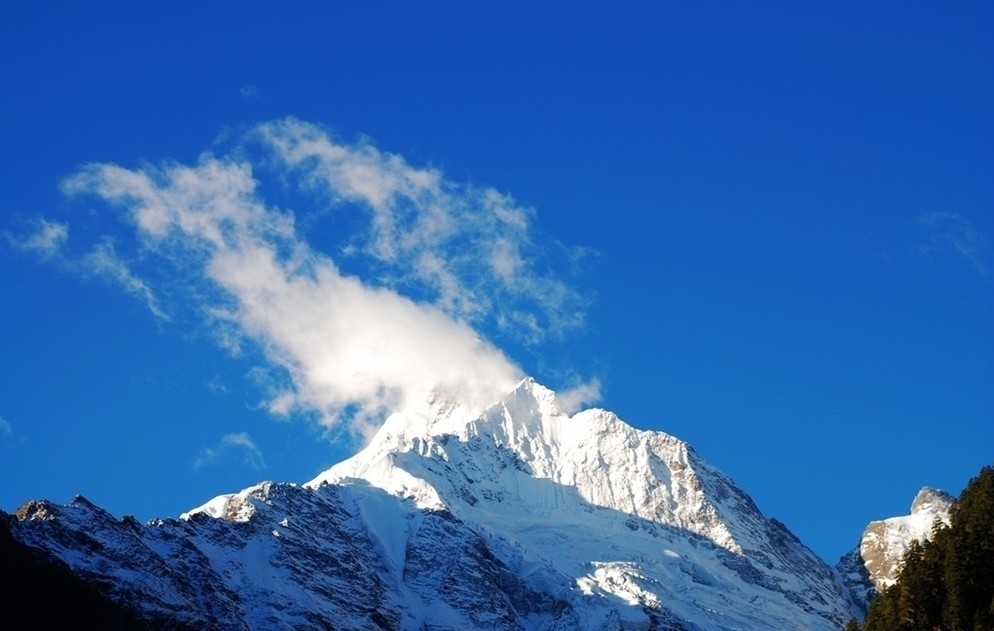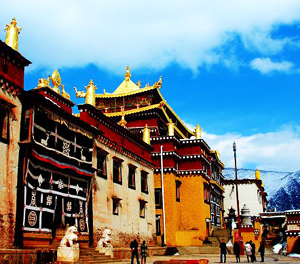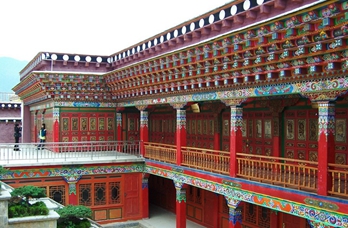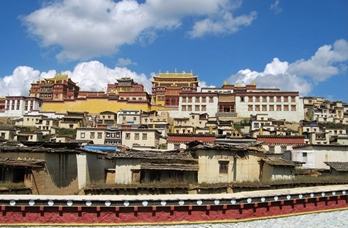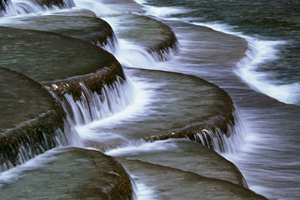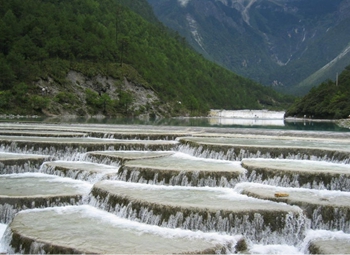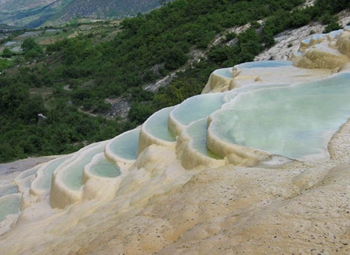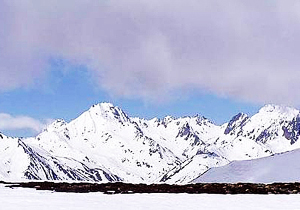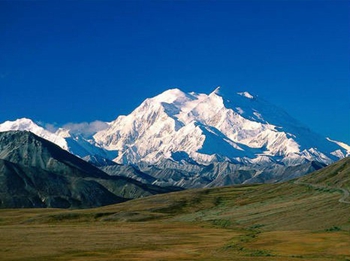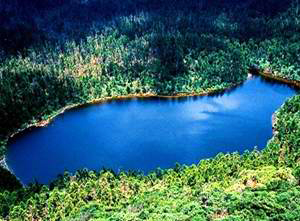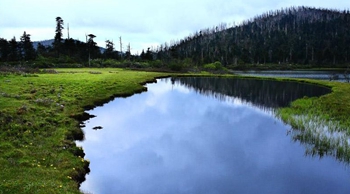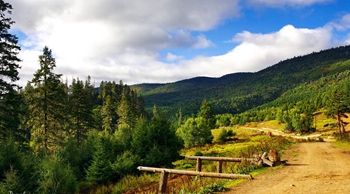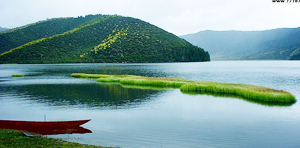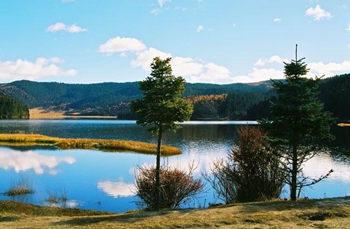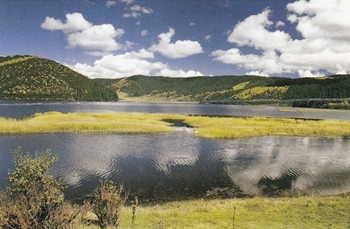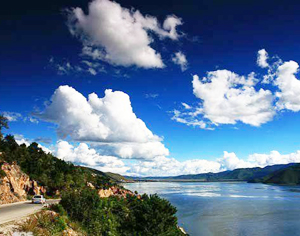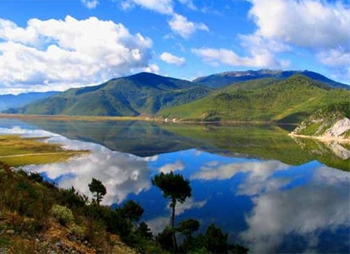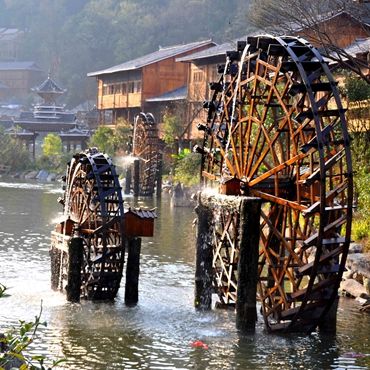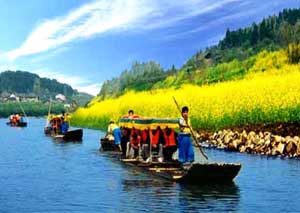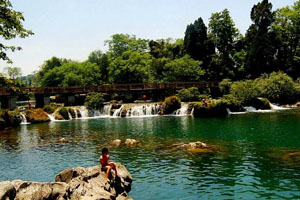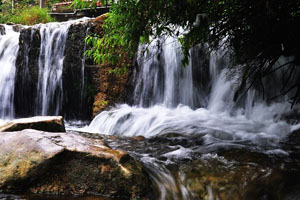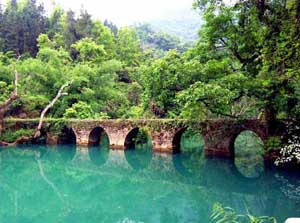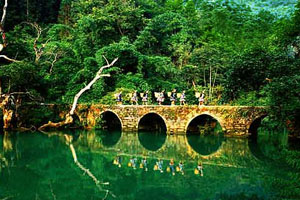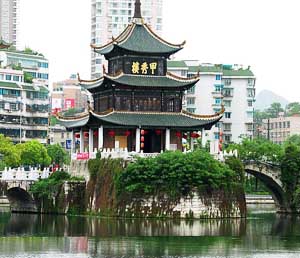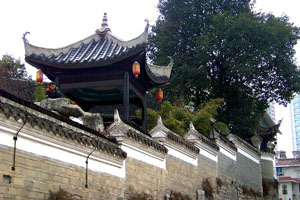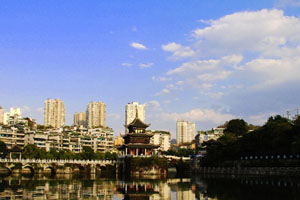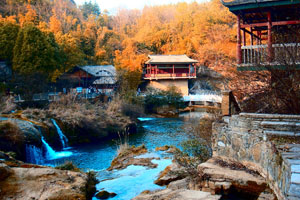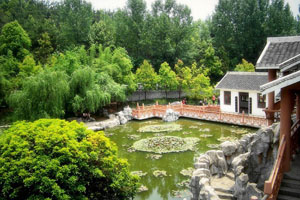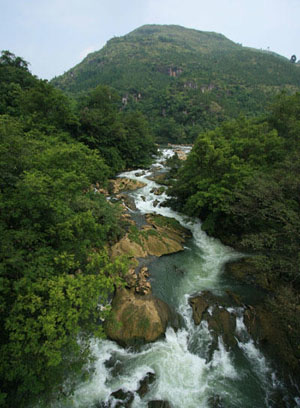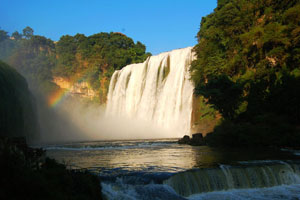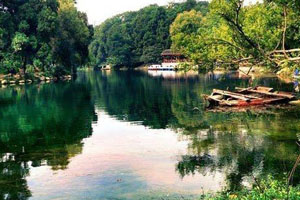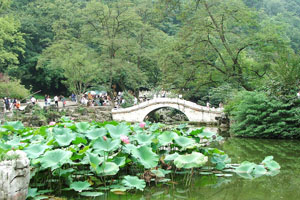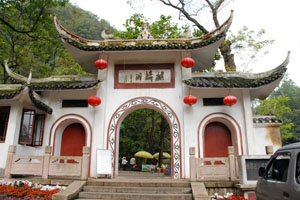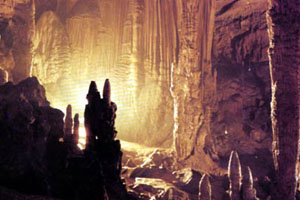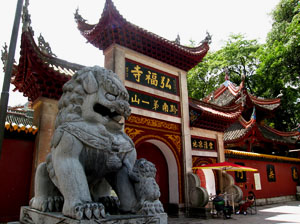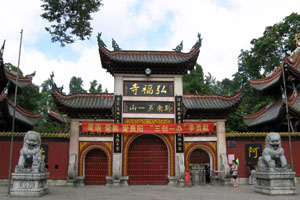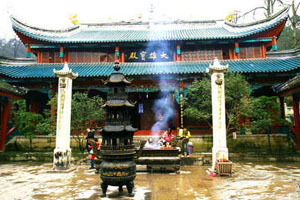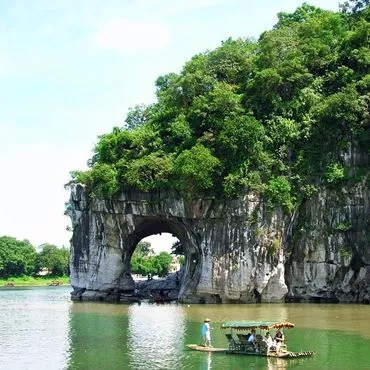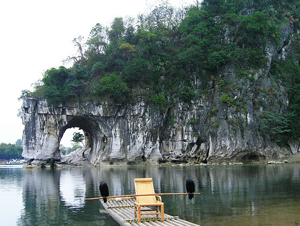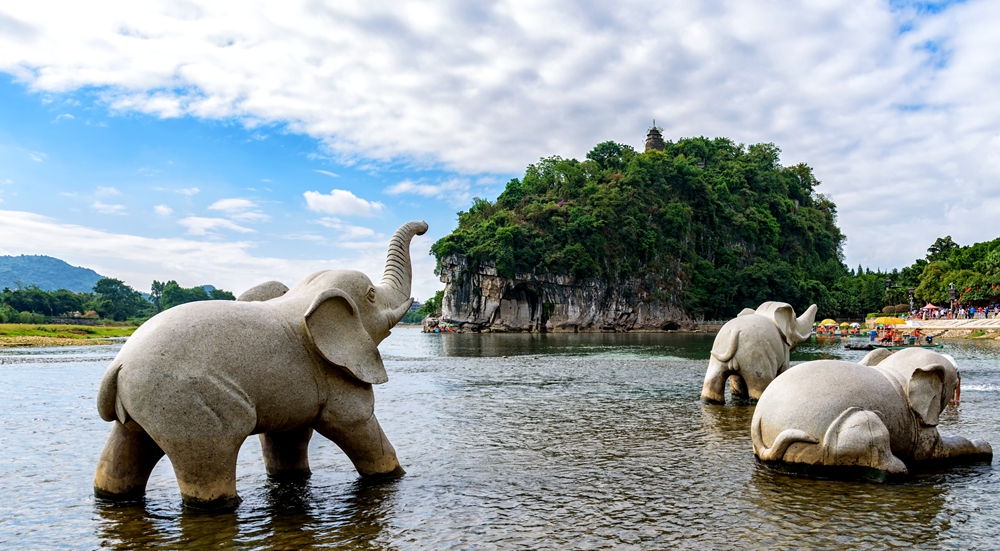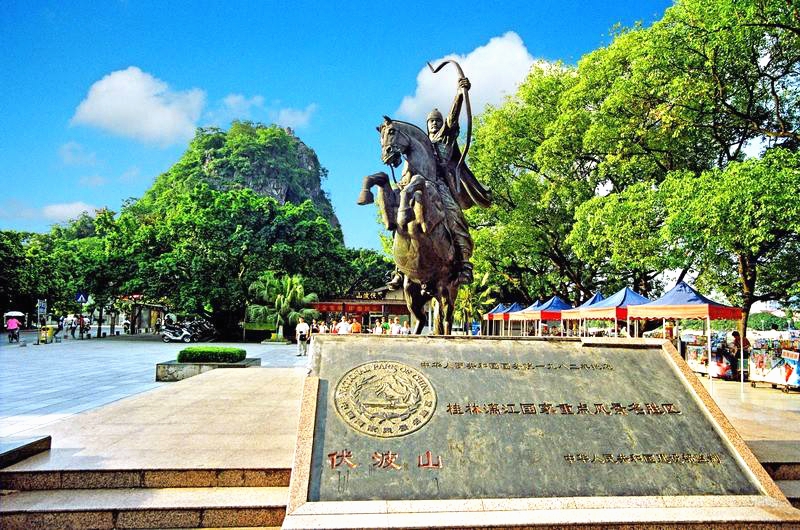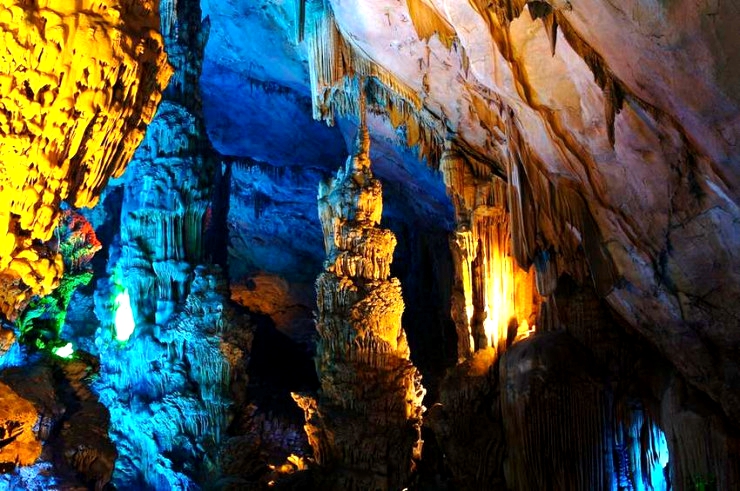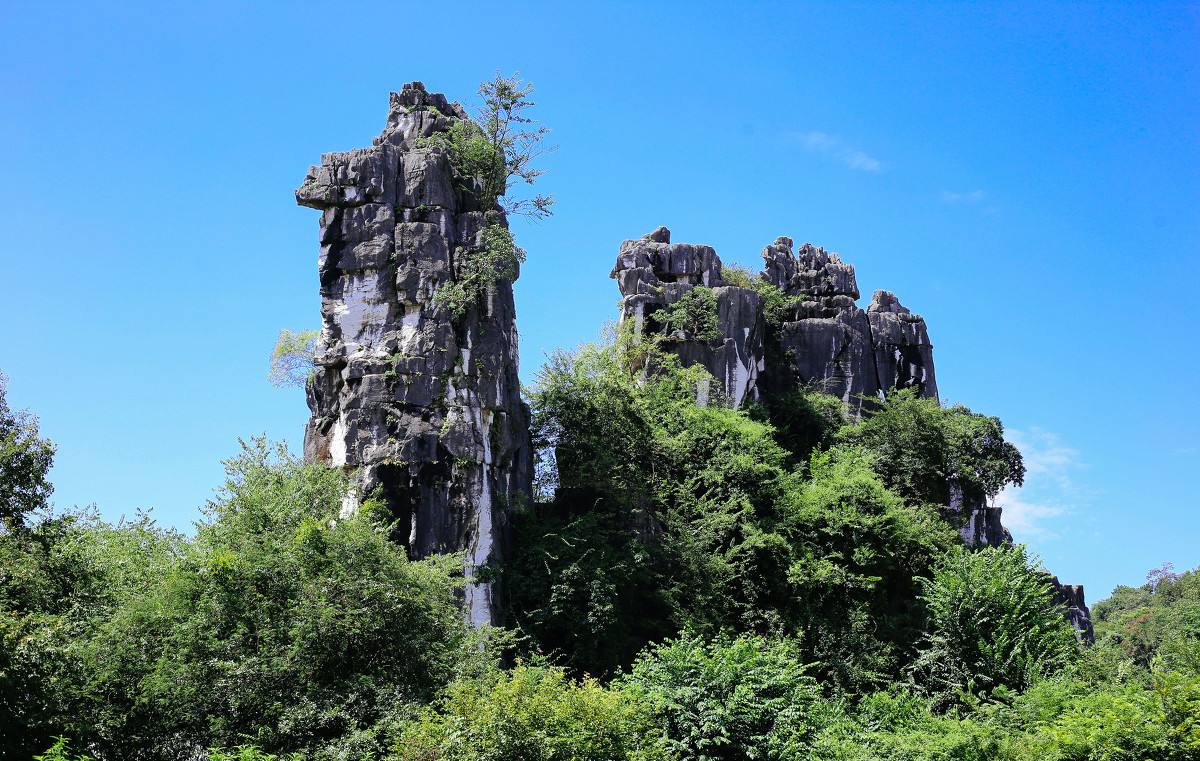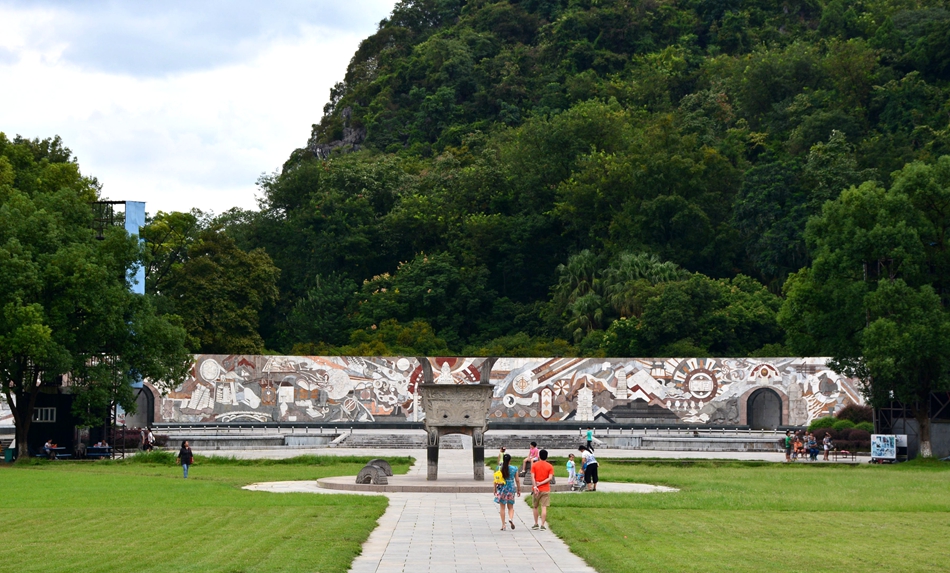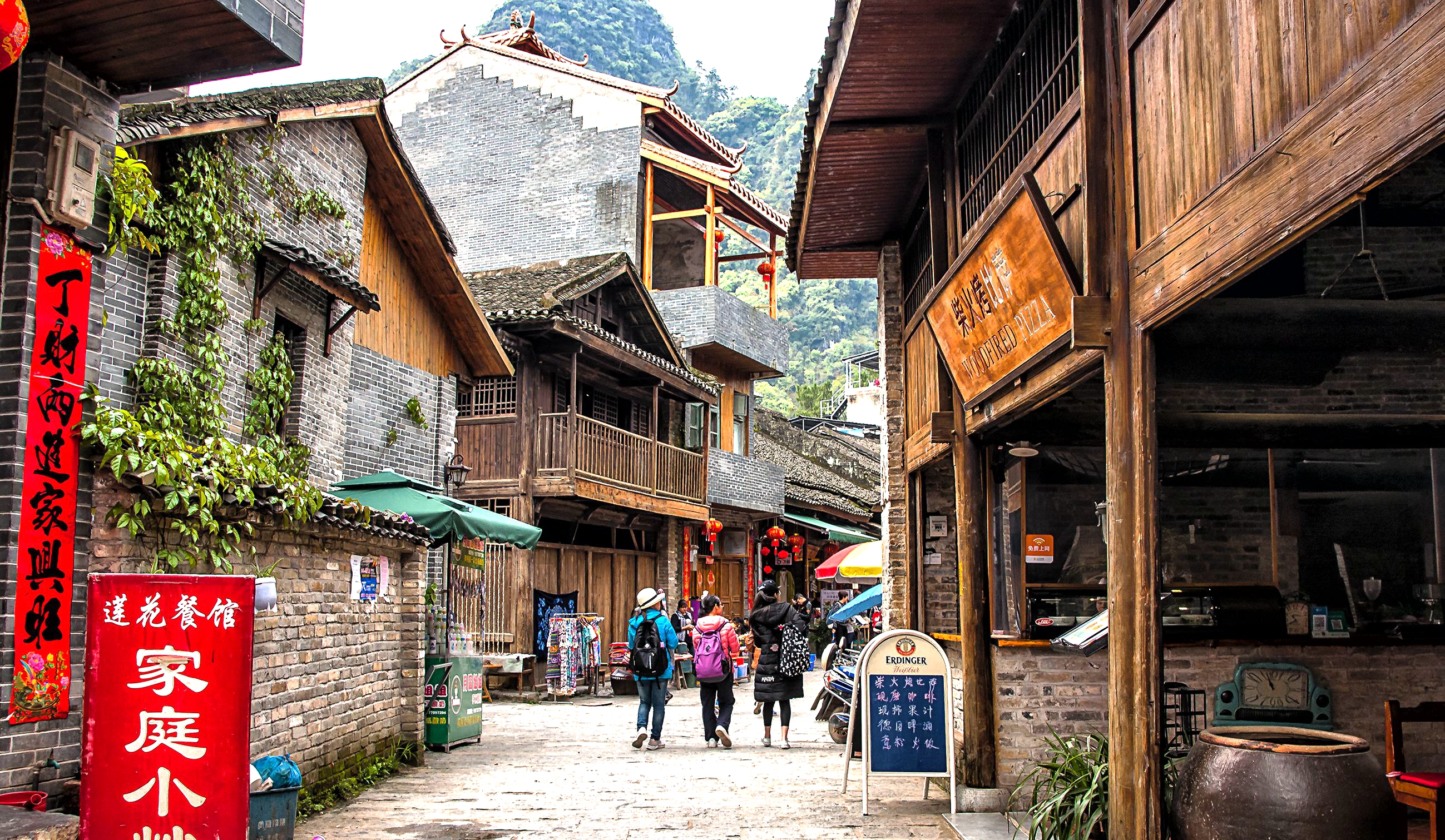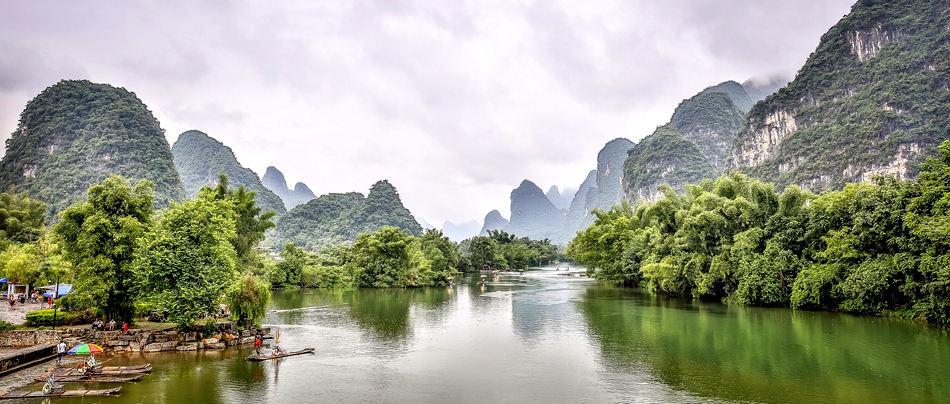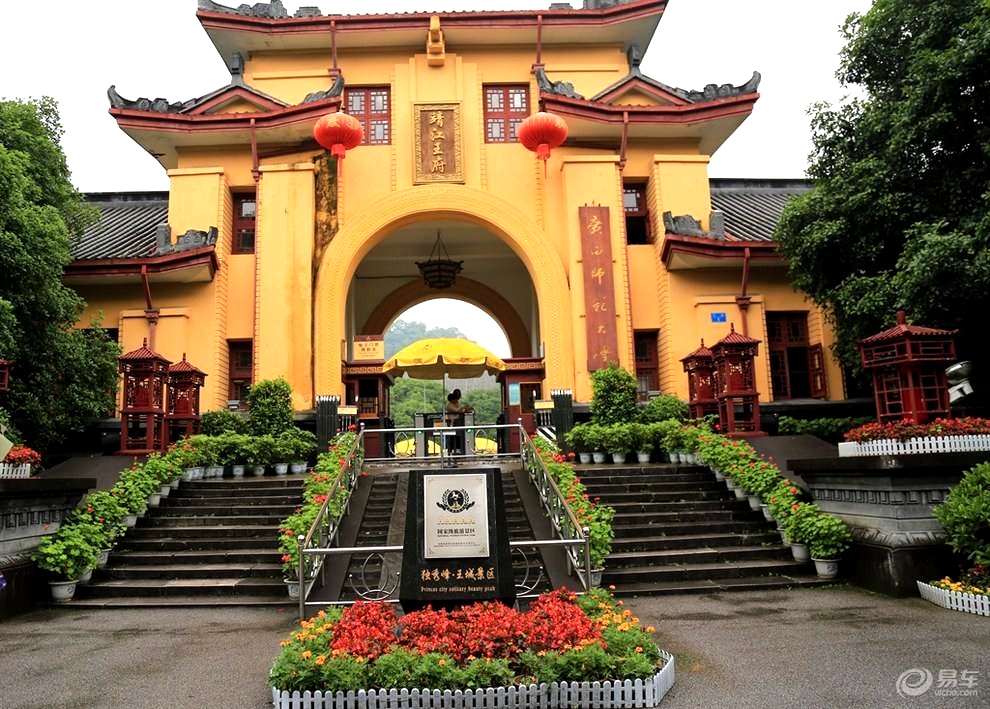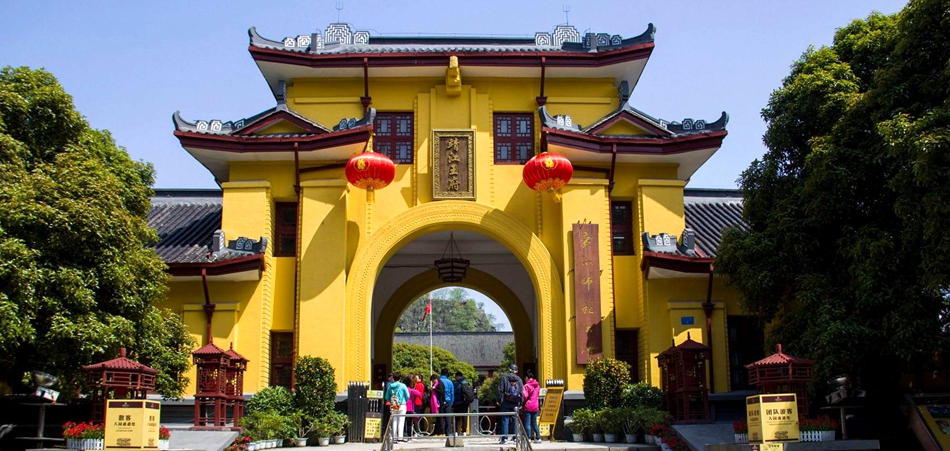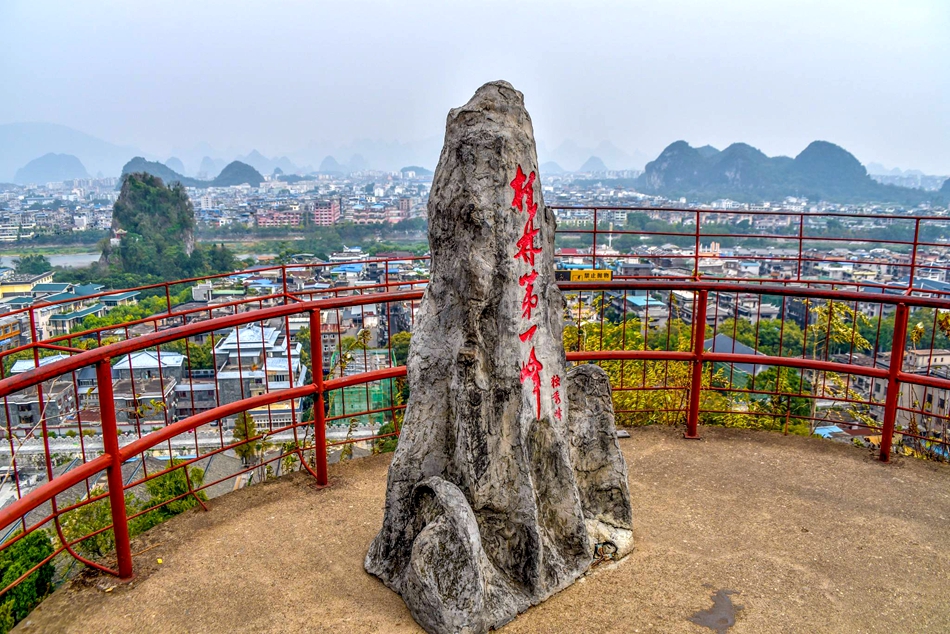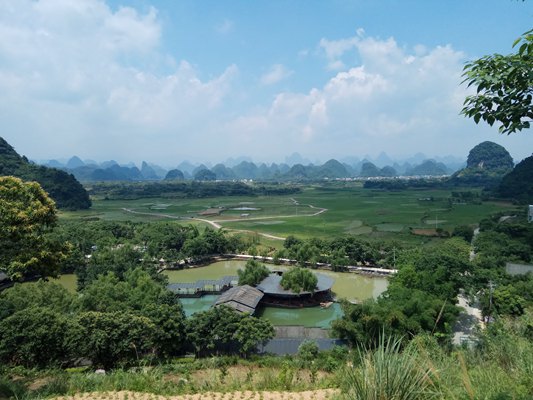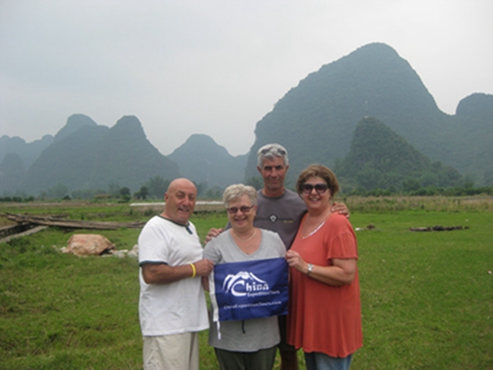Highlights
This tour shows you the most beautiful sceneries in splendid China. It starts from Beijing, to witness and climb the magnificent ancient construction of the Great Wall and get a brief impression on this world-famous capital. The ancient capital city Xi’an is really a Chinese history book. Here you can visit the splendid Terracotta Warriors and Horses. The two-day long trekking in the Tiger Leaping Gorge will be a little bit adventures, but the sense of achievements you have eventually will make you forget your sore legs. Then we come to Guiyang, where you will be amazed at the grand Huangguoshu Waterfall. What’s more, you experience a cruise on the world-wide famous Li River through stunning karst landscapes in Guilin. Enjoy a leisurely walk at the West Street and be intoxicated in the warm and romantic atmosphere.
Itinerary
Arrive in Beijing, our guide (CET representative) will meet you at the airport and transfer you to the hotel. The capital city of the People’s Republic of China Beijing (Peking) is a fast-growing, dynamic metropolis with high-rise buildings, shopping malls and vast international hotels connected by an intricate freeway system crisscrossing the city.
Stay overnight in Beijing.
Meals included:
After breakfast, let’s go to have a visit to the [Temple of Heaven], which is a complex of buildings, gardens, and pathways. Its organization indicates relationship between Earth and heaven. Next stop will take a walk on the [Tian'anmen Square]. It is one of the largest city squares in the world, located on the central axis of old Beijing. In the center of Tian'anmen Square stands the [Monument to the People's Heroes]. Then we will go to the [Forbidden City]. They are imperial palaces for the emperors of the Ming and Qing dynasties. And the Forbidden City also named the Palace Museum, shares the honor of being one of the five world-famous palaces with the Versailles Palace in France, Buckingham Palace in England, the White House in the U.S. and the Moscow Kremlin in Russia. Later the day will be on your own to explore more about this city.
Stay overnight in Beijing.
Meals included: Breakfast , Lunch
China’s Great Wall is the world’s longest architectural structure and is widely renowned as one of the seven great wonders of the world. There is a famous saying in China that "You are not a hero unless you climb on the Great Wall." This morning we will drive to the [Jinshanling Great Wall], the less developed and commercial section of the Great Wall. This historic construction is somewhat dangerous to climb because it winds up and down the precipitous ranges, but as a reward, splendid views are available.
People say that a visit to Beijing isn't complete without trying the crispy and tasty Peking duck dinner, so we highly recommend a featured dinner for you at one famous restaurant.
Stay overnight in Beijing.
Meals included: Breakfast , Lunch
This morning we will go to visit the [Summer Palace]--one of China's architectural masterpieces. a masterpieces of traditional Chinese gardening art, the Summer Palace combined artificial and natural attractions into a picturesque landscape. Of all the attractions inside the garden, the Tower of Buddhist Incense, the Long Corridor, the Marble Boat, Suzhou Street and the Garden of Harmonious Delights are the most famed.
After lunch we will drive to the airport for a pm flight to Xi'an. Upon arrival, you will be met by the guide and transferred to the hotel. The rest of the day will be on your own to relax.
Stay overnight in Xi'an.
Meals included: Breakfast , Lunch
With a history of more than 3,000 years, Xi'an has abundant collection of archaeological relies to express its rich history. This morning we will go to visit [Banpo Museum], where you can see lots of precious unearthed cultural relics and artworks, indicating the prehistoric civilization and showing you the productive activities in ancient time. Followed will be a renowned spot. Situated east of Xi'an city, the [Terra-cotta Warriors and Horses Museum] is famous throughout the world for life-sized terra-cotta warriors and horses. The three pits of the terra-cotta warriors and horses excavated shows you how magnificent the structure of Emperor Qin Shihuang's Mausoleum was.
Later this evening you may choose local special Dumpling Dinner and the Tang Dynasty Music and Dance Show to experience some typical custom.
Stay overnight in Xi'an.
Meals included: Breakfast , Lunch
This morning we will go to visit the ancient [City Wall]. The wall now stands 12 meters (40 feet) tall, 12-14 meters (40-46 feet) wide at the top and 15-18 meters (50-60 feet) thick at the bottom. It covers 13.7 kilometers (8.5 miles) in length with a deep moat surrounding it. And the [Provincial Museum], it is a striking Tang-Dynasty style pavilion, houses a large collection of 113,000 historic and cultural artifacts unearthed in Shaanxi. Also included is a visit to the [Big Wild Goose Pagoda]. It is one of the city's most distinctive and outstanding landmarks, possibly the most beautiful building left in Xi'an today. And then we will drive to airport for a pm flight to Kunming.
Upon your arrival at Kunming airport, you will be picked up and transferred to your hotel.
Stay overnight in Kunming.
Meals included: Breakfast , Lunch
In the morning, we will go to the [Green Lake Park] (Cuihu Gongyuan), which is one of the most picturesque parks in downtown Kunming. All year round the park is venue of one sort of exhibition or another, and with its snug seclusion it is frequented by local residents who come here for few hours of leisure. In November and December every winter, a huge flock of red-beaked gulls migrate here from Siberia. In winter and spring, Kunming residents flock to the Cuihu Park to feed red-beaked gulls. There are tens of thousands of them which have descended upon the lake. This lovable scene, man, birds and nature mingle in such harmony, has kept occurring over the last ten years. The rest of the day will be on your own to explore the city.
Stay overnight in Kunming.
Meals included: Breakfast , Lunch
Today we will enjoy a whole day tour in wandering in the [Stone Forest]. Those magnificent stone masterpieces, various strange and steep intricate formations, and countless labyrinthine vistas in Stone Forest (Shi Lin in Chinese) will definitely make you be marvel at. It is worthy of the fame as the 'First Wonder of the World'. And there goes a local saying: “It is a waste of time without being in the Stone Forest while visiting Kunming”.
Later this afternoon we will drive to Kunming Train Station to catch an overnight train to Dali after dinner.
Stay overnight on train.
Meals included: Breakfast , Lunch
You are picked up by your guide at Dali Train Station in the morning, transferred to your hotel in the Old Town. The rest time in the morning will be your own.
After lunch, we will set out to visit the most outstanding landmarks in Dali, [Three Pagoda Temple]. As its name implies, Three Pagodas are made of three ancient independent pagodas forming a symmetrical triangle. They are used as a symbol of the town and appear on just about every calendar decorated of Chinese scenery. Then we will continue to visit a [local Bai Minority Family] for the first hand experience of the local daily life. The Bai, a branch of the Yi people, first settled this area some 4,000 years ago. Their hospitable and their traditional way of life and finished handicrafts will surely impress you.
Stay overnight in Dali Old Town.
Meals included: Breakfast , Lunch
Today we will depart Dali for Lijiang by private van/bus after lunch. It is roughly a 3.5 hour drive. The beautiful scenery along the way will surely impress you with some unique feeling. We may stop on the way for you to relax and take some photos. We will arrive in Lijiang before dinner time.
Stay overnight in Lijiang.
Meals included: Breakfast , Lunch
Lijiang is the old capital of the Naxi people, kin of the Tibetans, who are traditionally matriarchal and whose music and Dongba script are unique to them. Badly damaged by an earthquake in early 1996, the delightful town sits on a plain dominated by the snowcapped Jade Dragon Snow Mountain. This morning we will go to the [Jade Dragon Snow-capped Mountain]. With skyscraping snow-capped peaks and its imposing body, it reflects in the interlaced rivers flowing under the old town, composing a fabulous picture. Viewed from afar, the snow-capped range resembles a silver dragon with snow curling up its middle. Rich forest, herb and animal resources thrive on the mountain and a giant tram cart up here is one of the highest of its kind in China. We will take cables to climb the mountain and be intoxicated in the picturesque scenery. And we also will organize a [Naxi Minority family visit] for you in the afternoon.
Stay overnight in Lijiang.
Meals included: Breakfast , Lunch
Depart for Tiger Leaping Gorge by private car, van or bus after breakfast. Before trekking, you'll have lunch at Qiaotou Town on the way and we will head on to Tiger Leaping Gorge and go straight to our first guest house.
Stay overnight at Tiger Leaping Gorge.
Meals included: Breakfast , Lunch
Relax in the morning and enjoy the view before we take the high trail to our second guest house. Wedged tightly between steep cliffs, the [Tiger Leaping Gorge] is one of the great, and mostly unspoiled, scenic spots in not only Yunnan province, but surely in China as well. It is a well-known gorge of Yangtze River,where the river is so narrow here. As described in legend, a hunted tiger made his escape to the other side in a single bound. The whole day will be a over three hours walk.
Stay overnight in Tiger Leaping Gorge.
Meals included: Breakfast , Lunch
We will walk out from the Tiger Leaping Gorge before lunch time. After lunch in Qiaotou Town, we will head to Zhongdian, the town now officially recognized as "Shangri-La". This is actually the old Tibetan Province of Kham and was used as a winter grazing area for the livestock. The surrounding countryside is much as it always has been, preserving mysterious and ancient atmosphere. Eventually we will arrive at Shangri-la before dinner time.
Stay overnight in Shangri-la.
Meals included: Breakfast , Lunch
Let’s go to visit [Songzanlin Monastery] today. It is a spiritual hub for people to discover the mystery and traditions of Tibetan Buddhism, a famous Tibetan style Buddhist temple in China. This scenic spot attracts the tourists for where they can enjoy the view and be lucky to take photos of girls wearing exquisite Tibetan costumes holding perfectly white fluffy lambs against the imposing mountains and blue sky. Also we will arrange to visit the [old part of the town] and have a [Tibetan family visiting]. The Tibetan built their houses in distinctive religious styles influenced by Buddhism. You can taste Tibetan specialties of yak butter tea, local yogurt and Tibetan barley. Later this afternoon will be on your own to walk around. We suggest you get a feeling of local people's daily life by visit the local market to get a feeling of local people's daily life.
Stay overnight in Shangri-la.
Meals included: Breakfast , Lunch
Take a morning flight back to Kunming. Then catch another flight to Guiyang in the afternoon or in the evening. Guiyang situates in the southwest China with a population of about 3.5 million, of which 65% is Han and the rest a mixture of minorities such as Miao, Bouyei, Dong, Yi, Shui, Hui, Gelao, Zhuang, Yao, Bai, Tujia, etc. The most populous minority ethnic group is the Miao, and less populous are the Buyi, the Dong, and the Tujia. It becomes a developing tourist resort of China due to its beautiful scenery, pleasant climate and abundant tourist resources. Upon arrival, your guide will meet you at the airport and transfer you to the hotel. The rest of the day will be leisure at relax.
Stay overnight in Guiyang.
Meals included: Breakfast , Lunch
After breakfast, we will drive to the [Huangguoshu Waterfall]. World famous Huangguoshu Waterfall reaches a width of 81m (about 266feet) with a drop of 74m (about 243feet). Behind the Fall, lies the 134 meter-long (about 0.1miles long) Shuilian-dong (the Water Curtain Cave) where one can watch the grand fall inside which makes you feel like you are in a fairyland. The view from this amazing spot is particularly stirring at sunset. Xiniu Tan, the pond into which the waterfall pours, is accessible. Standing by the pond, tourists can be closer to the natural spectacle. In addition to the Huangguoshu, there are over ten waterfalls and water-eroded caves along the Baishuihe River. Spotting in the scenic zone, are other falls with distinct features and charm respectively. After visiting the scenic zone, one would feel as if he has visited all the falls in the world. Later the day we will drive back to Guiyang.
Stay overnight in Guiyang.
Meals included: Breakfast , Lunch
Today let’s go for a visit to the [Qianling Park]. It is located on Qianling Mountain, northwest of Guiyang. Qianling Mountain situated in Guiyang's northwestern corner provides a vast comprehensive garden for the city. As one of the noted attractions on the Guizhou plateau, it boasts clear water, green mountains, tranquil forests and old temples. About 1500 kinds of trees and flowers as well as 1000 kinds of herbs have been found there in the Qianling Mountain. And there are gregarious macaques and flocks of birds too. More than 500 energetic and enchanting macaques live in the mountain in the park and add to the features of the park. There is a "holy fountain" up the mountain whose water is so clean that local people consider it coming from the heaven. The flowing steams from the fountain and the mist surrounding the forest make it one of the greatest eight scenic spots in Guiyang. After visit the park, the rest of the day will be on your own.
Stay overnight in Guiyang.
Meals included: Breakfast , Lunch
After breakfast, we will go for a flight from Guiyang to Guilin. Upon arrival, you will be met and transferred to the hotel. The rest of the day will be leisure at relax.
Stay overnight in Guilin.
Meals included: Breakfast , Lunch
Today we will go to Longji, a minority area with magnificent terraced rice paddies. During the tour to the [Longji Terraces], you may have a chance to take some wonderful pictures of minority people wearing exquisite costumes along the way. Located southeast of Longsheng, the rice terraces are built into the hillsides which look like great chains or ribbons as they wind from the foot to the top of the hill. This ingenious construction makes best use of the scare arable land and water resources in the mountainous area. Later this afternoon we will drive to visit [Huangluo Red Yao minority village]. Women there all keep their hair to a length of more than one meter. You will be marvel at their characteristic red costumes and beauty.
Stay overnight in Longsheng.
Meals included: Breakfast , Lunch
Early this morning we will drive to the Longsheng town. By visiting the local market, you can explore more interesting things in daily life of local people. Then we will drive to Guilin city. Upon arrival, you will be transferred to the hotel, enjoy a leisure afternoon.
Stay overnight in Guilin.
Meals included: Breakfast , Lunch
This morning we will begin one of your highlights in China tour. That is having [Li River cruise]. Cruising downstream with a pleasant breeze greeting, you can sit on cushion comfortably or enjoy the open-air viewing platform. Bring lots of film because this is a photographer's dream, where you are able to capture the dramatic landscapes that Chinese artists have been painting for centuries. Lunch will be served onboard. Enjoy the Li River picturesque scenery to Yangshuo. Disembark and walk to the West Street, which has received countless foreigners from all over the world and reputed as "Earth Village in China". Today, the 600 meters (about 0.37miles) long street has more than 300 cafes, restaurants, hotels art crafts and tourist stores, foreign language clubs, internet centers and Kungfu schools. This afternoon you will be free at leisure, you can enjoy a coffee time at the West Street, or walk around the small Yangshuo town.
Stay overnight in Yangshuo.
Meals included: Breakfast , Lunch
After breakfast, we will drive back to Guilin city. It will take the rest of the day in Guilin to discover its shinning scenic spots that make the city unique and especially beautiful. The symbol of Guilin, [Elephant Trunk Hill] is standing in the Li River and looks like an elephant drinking water from the river. The [Reed Flute Cave] is one of the most spectacular caves displaying karst geographical formation in various shapes. After the visit, we will continue to the nearby [South China Sea Pearl Museum], where we can learn some knowledge of pearls and have the chance to purchase real sea pearl at competitive prices. After dinner, we recommend a cruise in the city's central area on a water system, which will absolutely give you a deep impression of Guilin.
Stay overnight in Guilin.
Meals included: Breakfast , Lunch
Today will be on your own to relax or explore more about the city and until you are ready to be transferred to the airport for a flight to Hong Kong to continue your tour or for departure. Our service will end at the airport of Guilin.
Meals included: Breakfast
Pricing & Accommodation
-
 US Dollar
US Dollar -
 Euro
Euro -
 GB Pound
GB Pound -
 CA Dollar
CA Dollar -
 AU Dollar
AU Dollar -
 HK Dollars
HK Dollars -
 Renminbi
Renminbi
| 1 person | 2-5 persons | 6-9 persons | ≥10 persons | Single Room Supplement | |
| First Class Tour | $7696 | $4817 | $4100 | $3464 | $1690 |
| Comfortable Tour | $6140 | $3855 | $3236 | $3040 | $960 |
| Standard Tour | $5056 | $3468 | $2854 | $2536 | $610 |
* Price in every box above is for each person.
* The default currency is in US dollar. Please use the Currency Converter to see the equivalent quote in your currency. Price is for references only, it may vary according to your actual travel itinerary, travel time, hotel price rise or fall, US dollar exchange rate fluctuation, car fuel price change and government tax adjustment, etc..
* The price is only for your reference and it is subject to seasons, high or low.Please send us your inquiry if you are interested.
* The differences between First Class Tour, Comfortable Tour and Standard Tour are mainly reflected in the hotels we use. For First Class Tour, we use mostly 5 star hotels (or hotels corresponded to 5 star ones), 4 star hotels for Comfortable Tour and 3 star hotels for Standard Tour. But there’re exceptions when there come home stay experience, remote destinations and other specified circumstances in the itinerary.
Hotel list
| First Class Tour | Comfortable Tour | Standard Tour | |
| Beijing | Prime Hotel Beijing | Qianmen Jianguo | King Park View |
| Capital Hotel | Plaza Hotel Beijing | Holiday Inn Express Beijing Minzuyuan | |
| Xi’an | Jianguo Hotel Xi’an | Grand New World Hotel | City Hotel Xi’an |
| Tianyu Gloria Plaza Hotel | Aurum International Hotel | Melody Hotel Xi’an | |
| Kunming | Grand Park Hotel | Green Land Hotel | Jinjiang Hotel |
| Bank Hotel | New Era Hotel | Golden Dragon Hotel | |
| Dali | Gurong Hotel | Asia Star Hotel | |
| Regent Hotel | Landscape Hotel | ||
| Lijiang | Guanfang Hotel Lijiang | Wangfu Hotel | Grand Lijiang Hotel |
| Zen Garden Hotel | Sightseeing Hotel Lijiang | Sanhe Hotel | |
| Tiger Leaping Gorge | Guest house | Guest house | Guest house |
| Shangri-la | Paradise Hotel | Sightseeing Hotel Diqing | Pacific Ram Hotel |
| Poly Palace Hotel | |||
| Guiyang | Howard Gohnson Plaza Hotel Guizhou | Guizhou Trade-Point Hotel | Nanxiang Hotel Guiyang |
| Guilin | Sheraton Guilin | Bravo Hotel Guilin | Osmanthus Hotel Guilin |
| Shangri-la Hotel Guilin | Park Hotel Guilin | Hotel Universal Guilin | |
| Longsheng | Guesthouse | Guesthouse | Guesthouse |
| Yangshuo | Green Lotus Hotel Yangshuo | Yangshuo New Century Hotel | Yangshuo Aiyuan Hotel |
| Yangshuo Resort | Yangshuo Tangrenjie Hotel | Yangshuo Regency Holiday Hotel |
Inclusions / Exclusions
Inclusions:
- Attraction Entrance Fees
- Centrally Located Hotels
- Authentic Chinese Food
- Private Experienced Guides
- Private Cars/Van with Drivers
- Internal Flights/Train(s) in China
- Luggage Transfers
- Airport Taxes and Fuel Fees
- Service Charge & Government Taxes
- Travel Insurance
Exclusions:
- International Airfare to Enter/Leave China
- China Entry Visa Fees
- Excess Baggage Charges
- Personal Expenses
- Single Room Supplement
- Tips or Gifts to Guides/Drivers/Bellmen
Important Information
How to Pack up
We suggest that each person packs up one rollable suitcase with the weight under 20 kg/44lb. You will also need a day pack/bag to carry water, cameras and other electronics like iPods and mobile phones.
Checklist
It's only for reference and you may not need all of them. Choose from below according to the tour you pick up:
Passport (with photocopies)
Travel insurance (with photocopies)
Airline tickets (with photocopies)
USD cash and travelers checks
Credit or debit card (see personal spending money)
ChinaExpeditionTours vouchers and trip dossier
Any entry visas or vaccination certificates required
Day pack for daily personal items
Wet wipes / Moist towelettes
Alarm clock
Flashlight
Sun hat, Sun block, Sunglasses
Insect Repellent
Water bottle and Plastic mug for train journeys
Ear plugs for train journeys or light sleepers
Small towel and swim wear
Toiletries (biodegradable)
Sturdy walking shoes/Sport sandals
Money belt
Shorts for summer months (June – September)
Long pants
Shirts/T-shirts
Warm clothes for Nov-April. Fleece, Jacket, hat and gloves
Umbrella or waterproof jacket.
Cover for backpack or plastic bags to keep clothes dry.
Camera, film and memory chip
Reading/writing material
Binoculars
Pocketknife
First-aid kit (should contain lip salve, Aspirin, Band Aids, anti-histamine, Imodium or similar tablets for mild cases of diarrhea, re-hydration powder, extra prescription drugs you may be taking).
Local Dress
Generally speaking, the dress standard is more conservative in China than it is in western countries. Things also changes quickly, nowadays the young Chinese share the same hobbies with their western counterparts. When packing try to pick loose, lightweight, long clothing that will keep you cool in the usually hot and humid climate of summers. In predominately Buddhist and Muslim regions we ask that you dress respectfully and avoid very short shorts/skirts and singlets/tanktops when visiting temples or mosques or other holy sites.
Spending Money
Every traveler is different and therefore spending money requirements will vary. Some travelers may drink more than others while other travelers like to purchase more souvenirs than most. Please consider your own spending habits when it comes to allowing for drinks, shopping and tipping. Please also remember the following specific recommendations when planning your trip.
Money Exchange
As currency exchange rates in Asia fluctuate often we ask that you refer to internet for the recent exchange rates. There are many ATM machines that accept both Visa and MasterCard and other credit cards in most Chinese cities. We also recommend the use of cash and travelers checks in USD currency. Major credit cards are accepted in big shops but they may charge a 2-4% transaction fee. For the small shops and the street venders, they take cash (either Chinese Yuan or US dollar) only.
Meals
Eating is a big part of your traveling in China. Travelling with ChinaExpeditionTours you experience the vast array of wonderful food that is available out in the world. Generally breakfasts and lunches are included except dinners to give you the flexibility in deciding where, what and with whom to eat. Your group leader or local guide will be able to suggest favorite restaurants during your trip.
Emergency Fund
Please also make sure you have access to at least an additional USD200 (or equivalent) as an "emergency" fund, to be used when circumstances outside our control, necessitate a change to our planned route. This is a rare occurrence!
Tipping
It is customary to tip service providers in travel industry in Asia, at approximately 10%, depending on the service. Tipping is expected - though not compulsory - and shows an expression of satisfaction with the people who have assisted you on your tour. Although it may not be customary to you, it is of considerable significance to the people who will take care of you during your travels. Recommendations for tipping local guides would range from $6-$10 USD per person per day depending on the quality and length of the service, for driver, it could be half. If necessary, ask your tour leader or call your ChinaExpeditionTours tour advisor for specific recommendations based on the circumstances. If you have a tour leader for the whole tour, at the end of the trip if you felt he/she did an outstanding job, tipping is appreciated. The amount is entirely a personal preference. However as a guideline $6-10 USD per person, per day can be used.
Local Flights
All local flights are included in the cost of your tour unless otherwise noted. It is important that we have your passport information at the time of booking in order to process these tickets. Internal flight tickets are all e-tickets. They are issued locally and You will be given the information of them prior to the flight departure.
Laundry
Generally laundry facilities are offered by our hotels for a charge. You also can go to a laundry service center near your hotel to have your clothing washed at a lower cost. There will be times when you may want to or have to do your own laundry so we suggest you bring non-polluting/biodegradable soap.
Safety and Security
We strongly recommend the use of a neck wallet or money belt while travelling, for the safe keeping of your passport, air tickets, travelers' checks, cash and other valuable items. Many of the hotels we cooperate with have safety deposit boxes which are the most secure way of storing your valuables. A lock is recommended for securing your luggage.
Many national governments provide a regularly updated advice service on safety issues involved with international travel. We recommend that you check your government's advice for their latest travel information before departure. When travelling on a trip, please note that your group leader or local guides has the authority to amend or cancel any part of the trip itinerary if it is deemed necessary due to safety concerns. Your leader or local guides will accompany you on all included activities. During your trip you will have some free time to pursue your own interests, relax and take it easy or explore at your leisure. While your group leader or local guides will assist you with options available in a given location please note that any optional activities you undertake are not part of your itinerary, and we offer no representations about the safety of the activity or the standard of the operators running them. Please use your own good judgment when selecting an activity in your free time.
A Couple of Rules
Illegal drugs will not be tolerated on any trips. Possessing or using drugs not only contravenes the laws of China but also puts the rest of the group at risk. Smoking marijuana and opium is not acceptable for ChinaExpeditionTours travelers. Our philosophy of travel is one of respect towards everyone we encounter, and in particular the local people who make the world the special place it is. Use of illegal drugs is completely contrary to this philosophy and local law. Our group leader or local guides has the right to expel any member of the group if drugs are found in their possession or used.
Health
If you want to fully enjoy your trip abroad, a good health and confidence in physical strength are important. This trip may contain a fair amount of walking up and down steps in towns or climbing mountains. You should consult your doctor for up-to-date medical travel information well before departure. We recommend that you carry a First Aid kit as well as any personal medical requirements. Please be aware that sometimes we are in remote areas and away from medical facilities, and for legal reasons our leaders or local guides are prohibited from administering any type of drug including headache tablets, antibiotics, etc. In China pharmacies tend to stock the same western drugs as you get at home but they are usually produced locally so please bring the full drug name with you when trying to purchase a prescription drug. When selecting a tour please carefully read the itinerary and assess your ability to cope with our style of travel. Please refer to the Physical and Culture Shock ratings in this dossier for trip specific information. For travelers over 70 years a completed Medical Form is highly suggested to bring forth. ChinaExpeditionTours reserves the right to exclude any traveler from all or part of a trip without refund if in the reasonable opinion of our group leader or local guides they are unable to complete the itinerary without undue risk to themselves and/or the rest of the group.
Medical Form
It is very important you are aware that, as a minimum, an "average level of fitness and mobility" is required to undertake our easiest programs. Travelers must be able to walk without the aid of another person, climb 3-4 flights of stairs, step on and off small boats, and carry their own bags at a minimum. Travelers over the age of 70, or travelers with a pre-existing medical condition, are required to complete a short medical questionnaire, which must be signed by their physician. This is to ensure that senior travelers have the necessary fitness and mobility to comfortably complete their chosen trip. While our leaders or local guides work hard to ensure that all our travelers are catered for equally, it is not their responsibility to help individuals who cannot complete the day's activities unaided.
Travel Insurance
Travel insurance is compulsory in order to participate on any of our trips. You must have comprehensive travel insurance that covers you for medical costs associated with hospitalization, emergency travel and repatriation back to your home country. Please take your insurance policy with you when you travel. You may take other cover, of course, but we require you to be adequately insured before we can allow you to participate in our programs. Your ChinaExpeditionTours leader or local guides will need to see and record your policy details at the pre-tour briefing at the starting city, so please bring a copy along to the meeting. If you arrive without travel insurance your tour leader or local guide will require you to purchase a policy before you continue your journey with us.
If you are covered by a policy arranged through your credit card company you will be asked to provide evidence of this cover, as well as a 24-hour emergency contact number. Many credit card companies do not provide an insurance policy number. In this instance, the tour leader or local guides will need to record your credit card number, as this is required to activate any request for emergency assistance. You should also bring along the travel insurance information booklet provided by your credit card company. It is your responsibility to ensure that you meet the requirements set out by your credit card company in order to be effectively covered and that the cover offered is of a suitable standard.
Passport & Visas
Well before travelling, please ensure that you have a current passport, with an accurate photo, that is valid for at least six months after your scheduled return home. Also check that your airline tickets are in exactly the same name as your passport.
Please note that visas for China and Hong Kong are the responsibility of the individual traveler. The visa requirements for your trip vary depending on where you are from and where you are going. Americans, British, Canadians, Australians and New Zealanders do currently require a visa for China. For all other nationalities please reconfirm your visa requirements with your government. For the most up to date information please check your governments' foreign ministry website. It is important that you check for yourself. For most travelers there will probably have an embassy and consulate in the country that you live in. Please note if you are travelling from China, into Hong Kong then back into China, you will need a double entry Chinese visa. Note that on some occasions people transiting through China on way to Hong Kong have been made to go through immigration and had their single entry visa stamped making this invalid. Do not allow your visa to be stamped if you are only going through transit.
Keeping in Touch
If you need to be contacted while travelling we recommend that you set up an email address that can be accessed on the road, rather than relying on postal mail. Email cafes are becoming increasingly commonplace and cheap throughout the country, and have quickly become the preferred way for our leaders and travelers to stay in touch. If someone wishes to contact you in an emergency while you are on one of our trips we recommend that they contact us so we can get into touch with your tour leader or local guide quickly by their cell phone and they can pass their cell phone to you! We recommend that family and friends don't try to contact you through phoning hotels en route, as our hotels are subject to change.
Feedback
After your travels, we want to hear from you! Your feedback information is so important to us and we'll record you and give you ChinaExpeditionTours travel points so you can use the points to get discount for your next ChinaExpeditionTours trip or your friends' ChinaExpeditionTours tours.


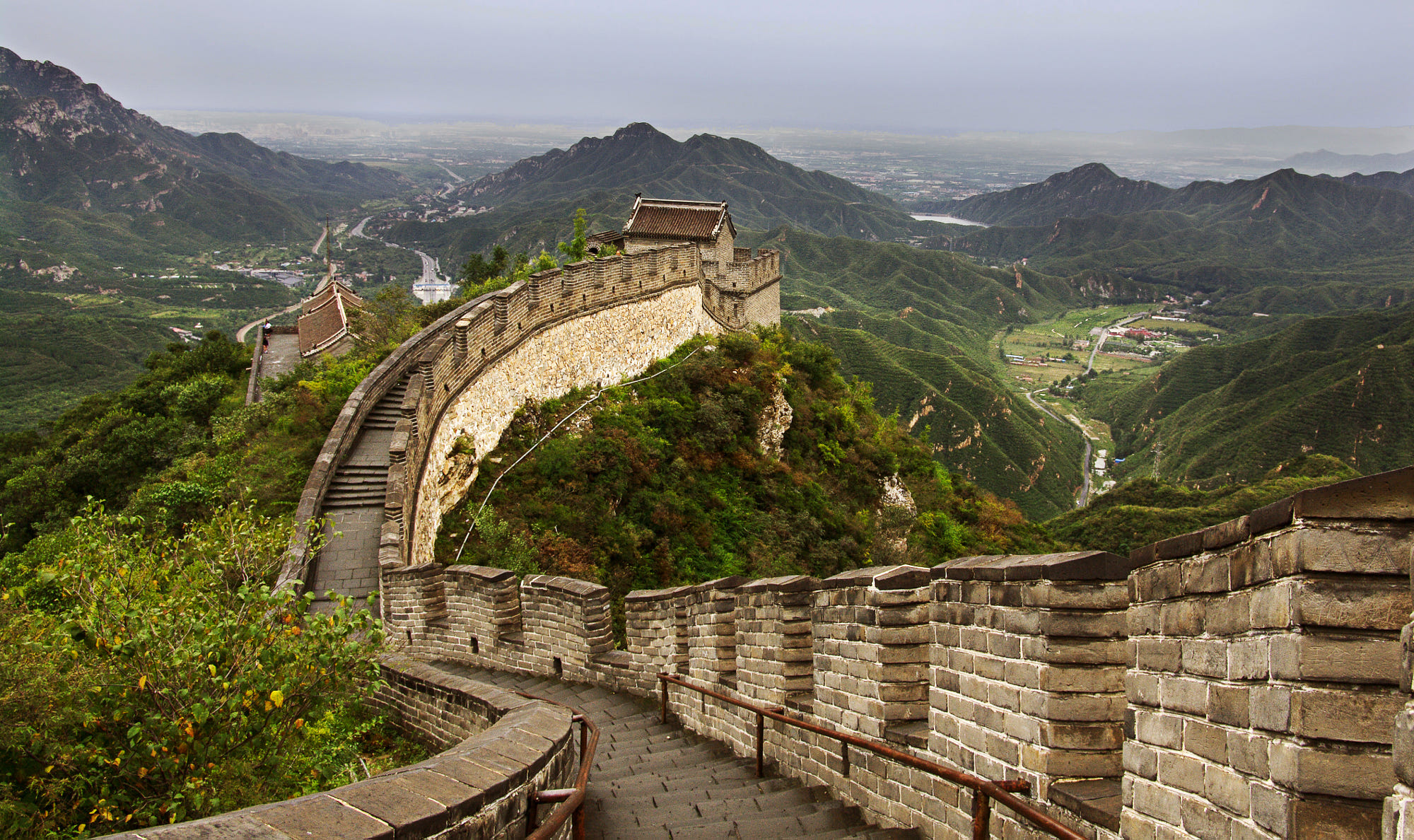
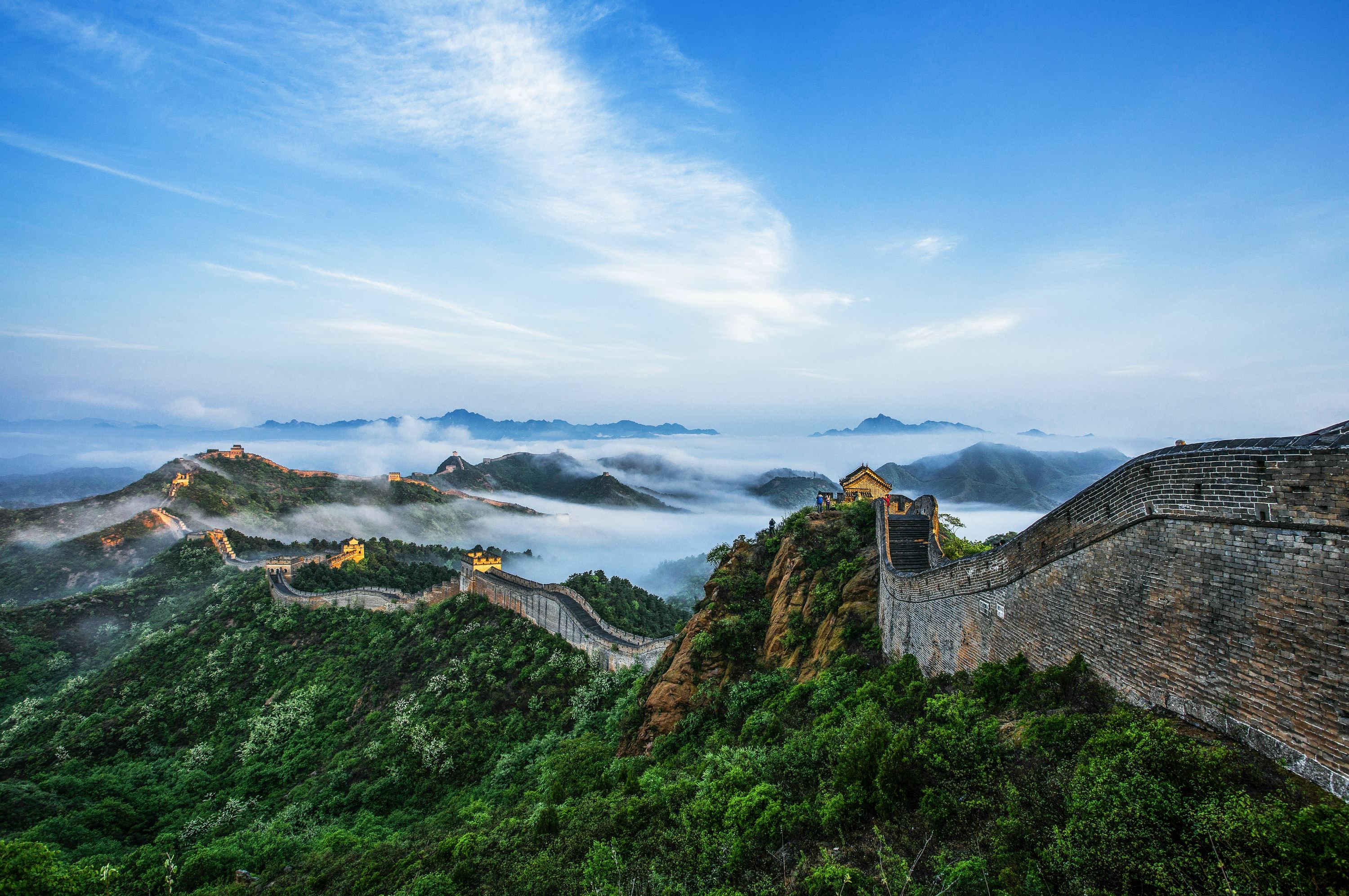
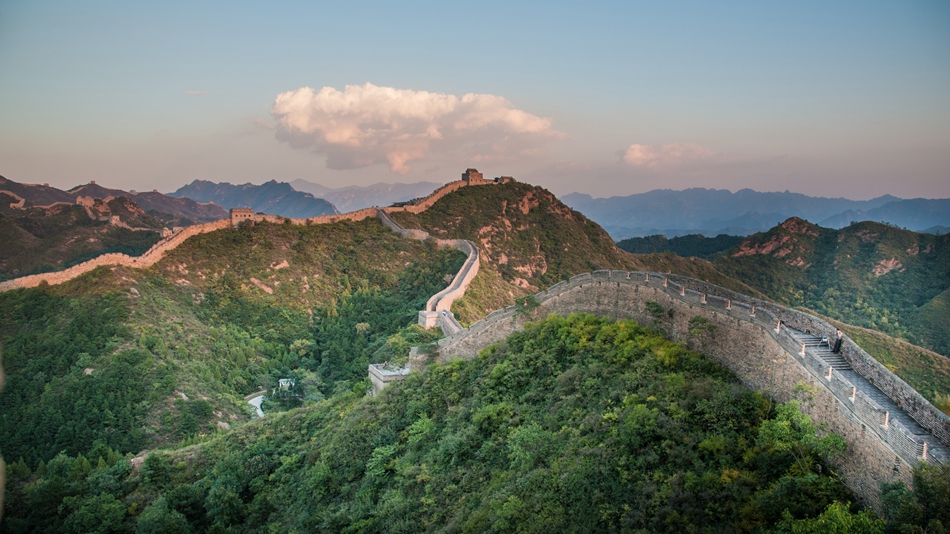
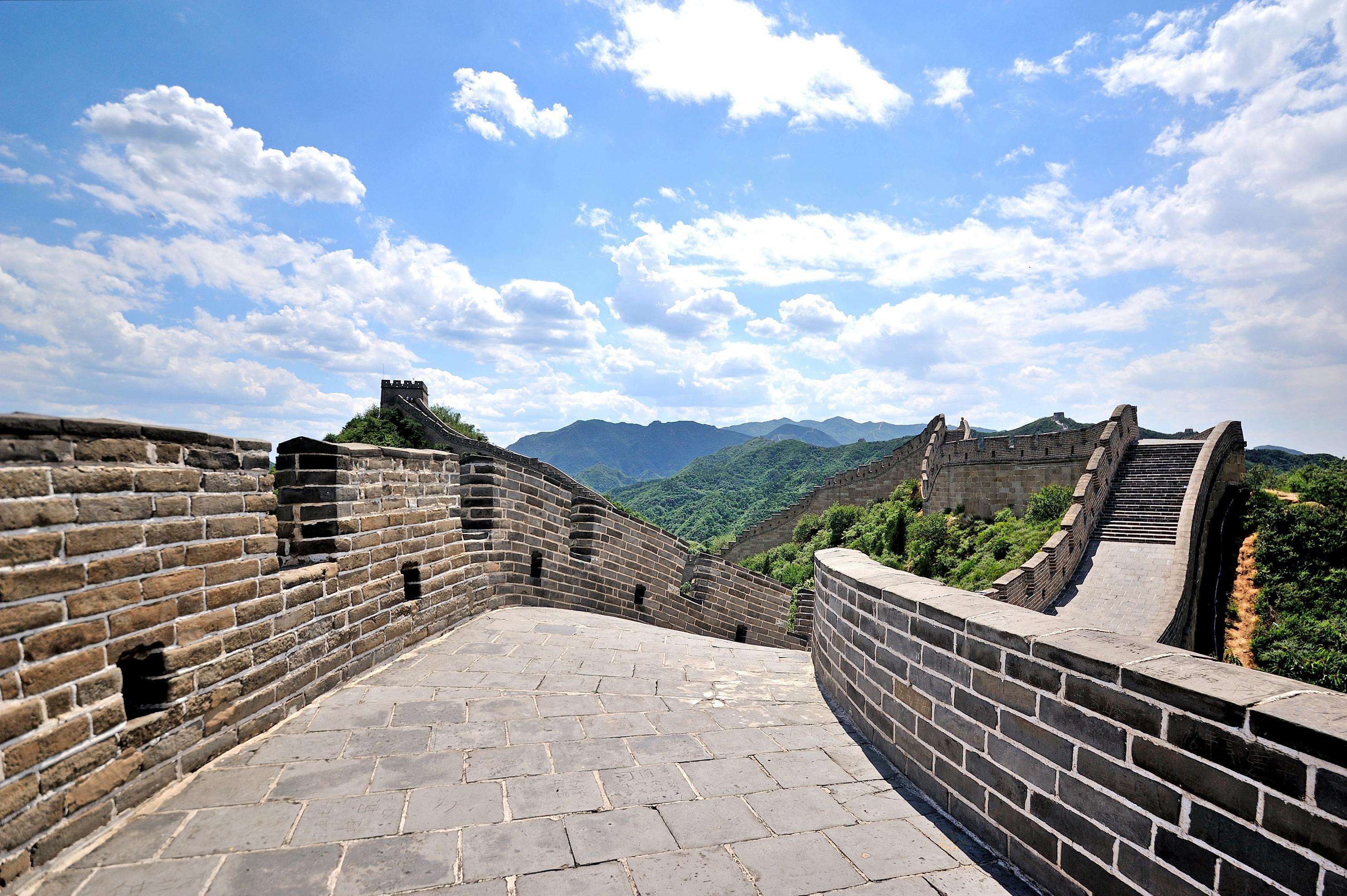

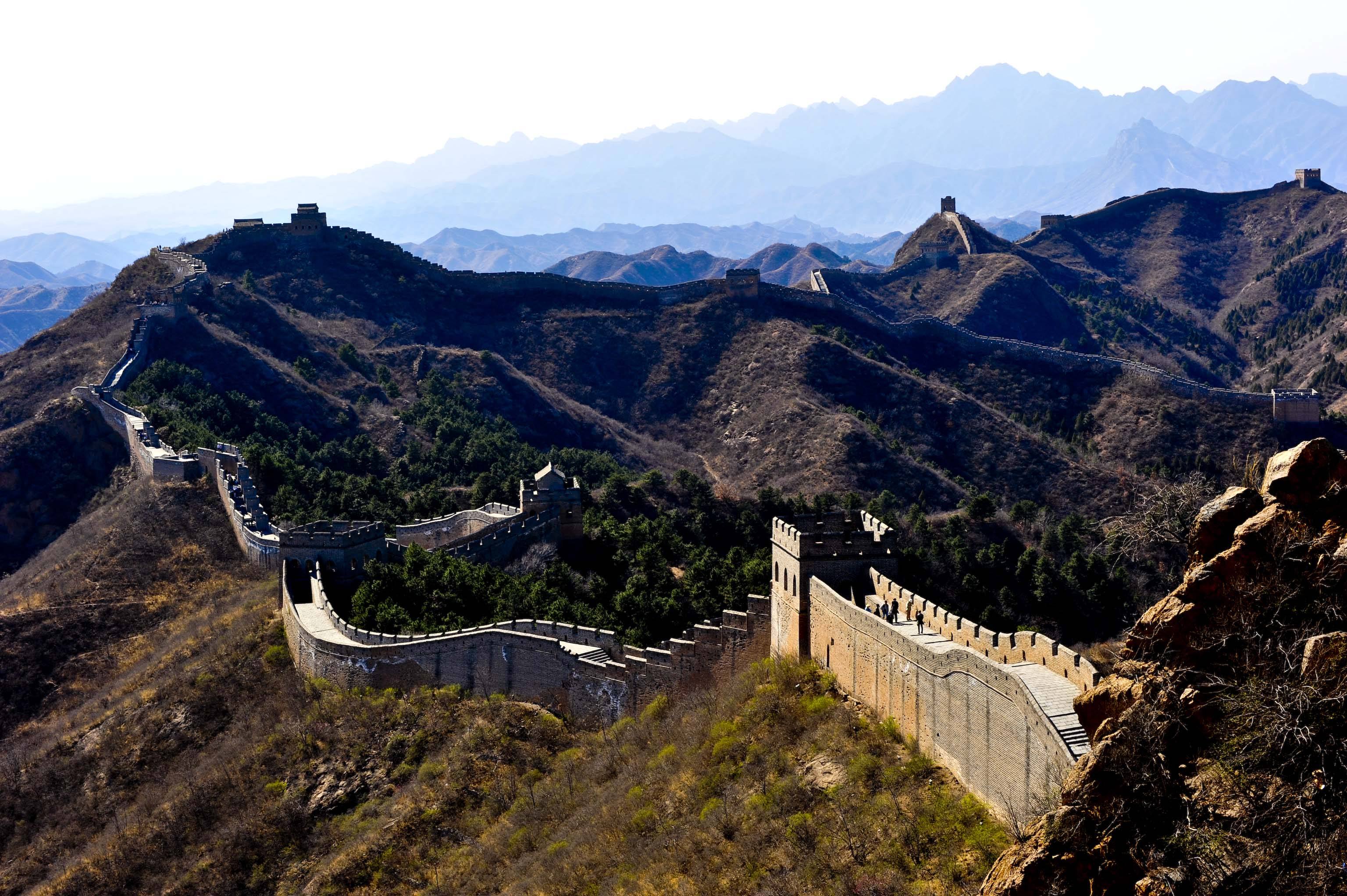
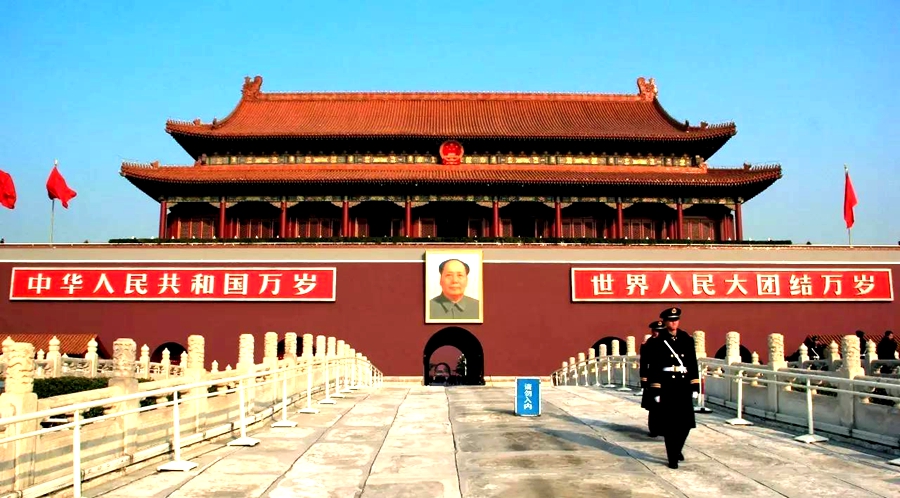
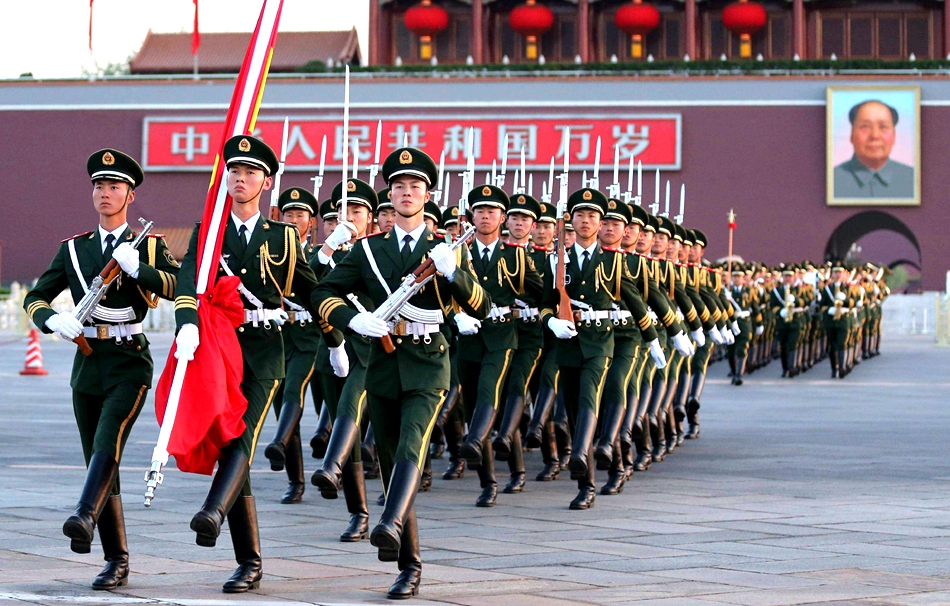

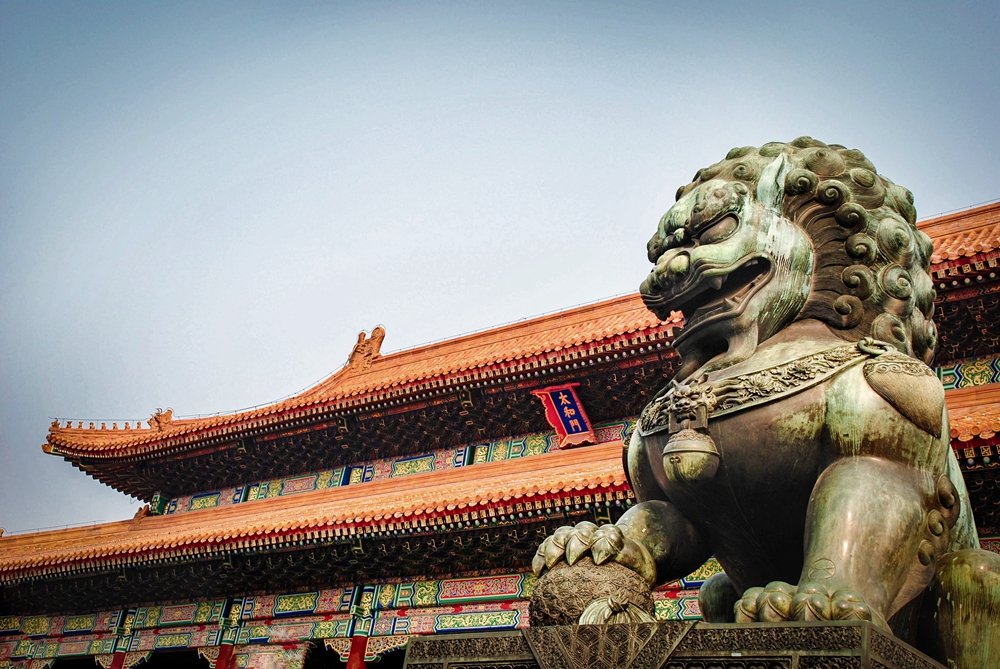 The Construction of the magnificent palace started in 1406, and ended in 1420. It took 14 years to complete the project. One year after completion, Emperor Yongle moved his capital from Nanjing to Beijing. Since then, 24 emperors have lived at the Forbidden City, 14 during the Ming Dynasty and 10 during the Qing Dynasty.
The Construction of the magnificent palace started in 1406, and ended in 1420. It took 14 years to complete the project. One year after completion, Emperor Yongle moved his capital from Nanjing to Beijing. Since then, 24 emperors have lived at the Forbidden City, 14 during the Ming Dynasty and 10 during the Qing Dynasty.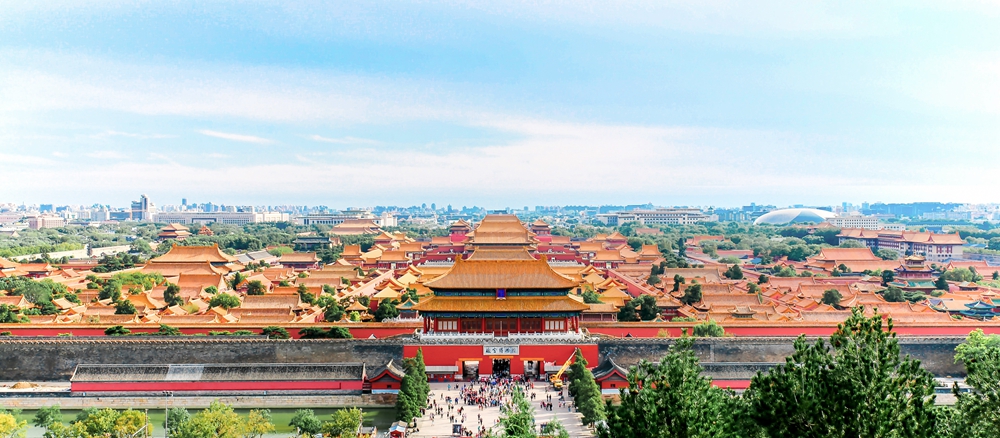
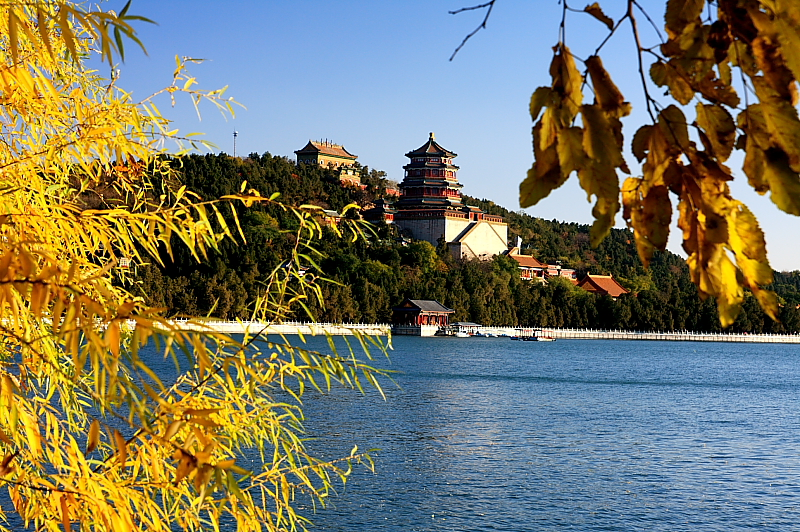
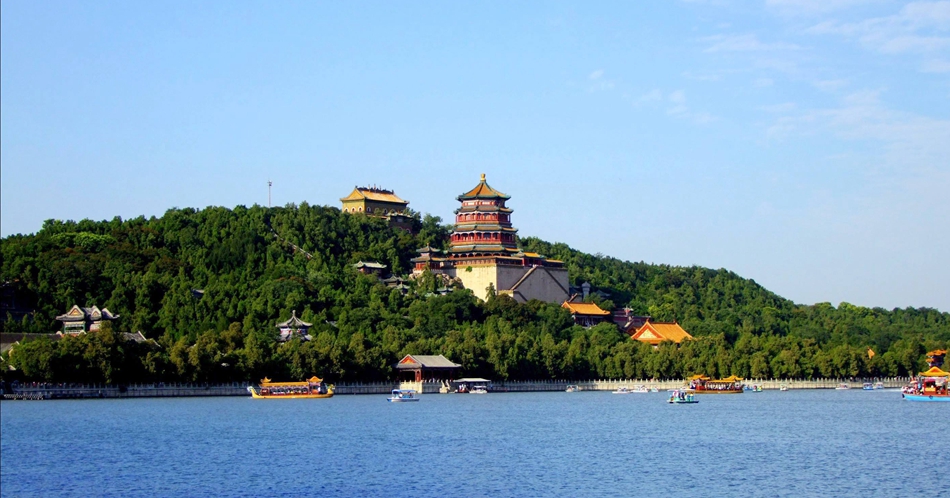
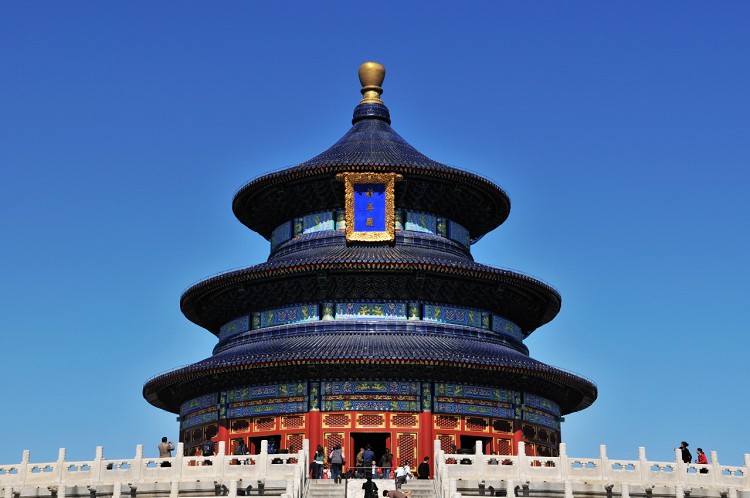
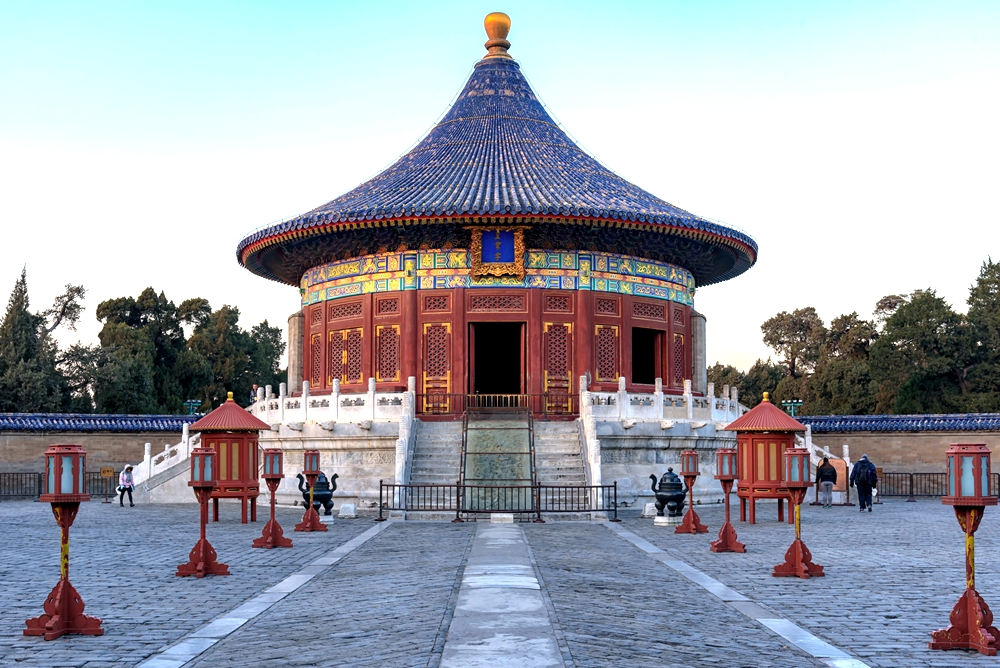
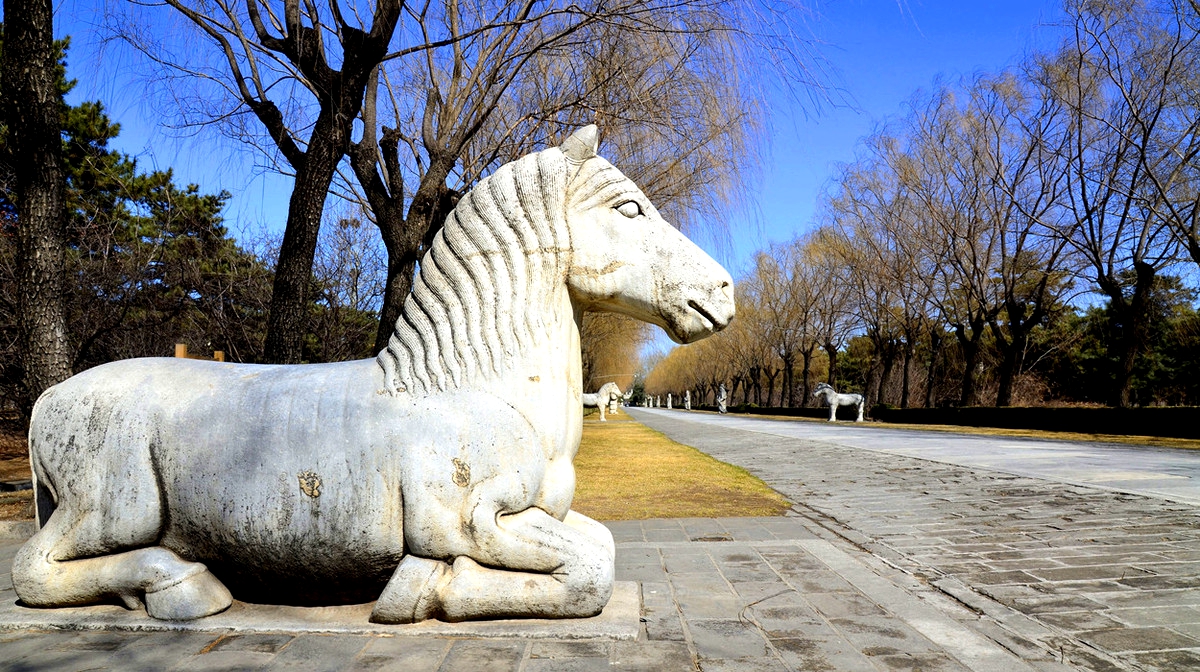
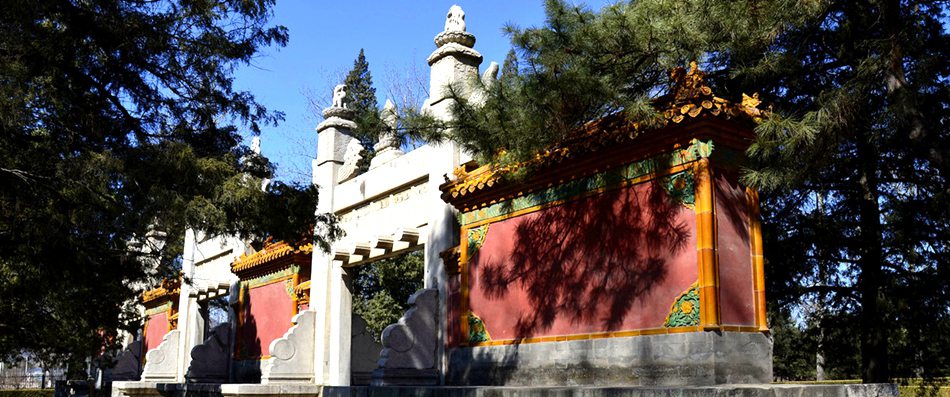
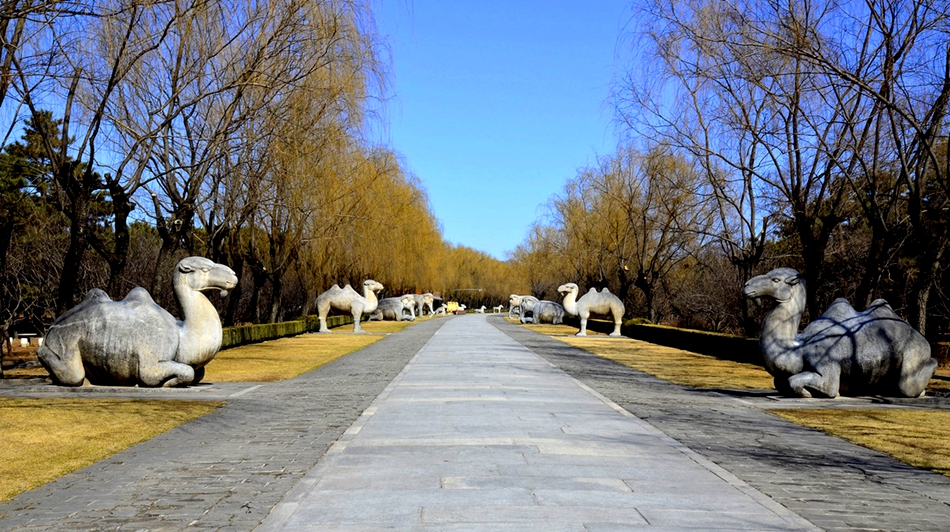
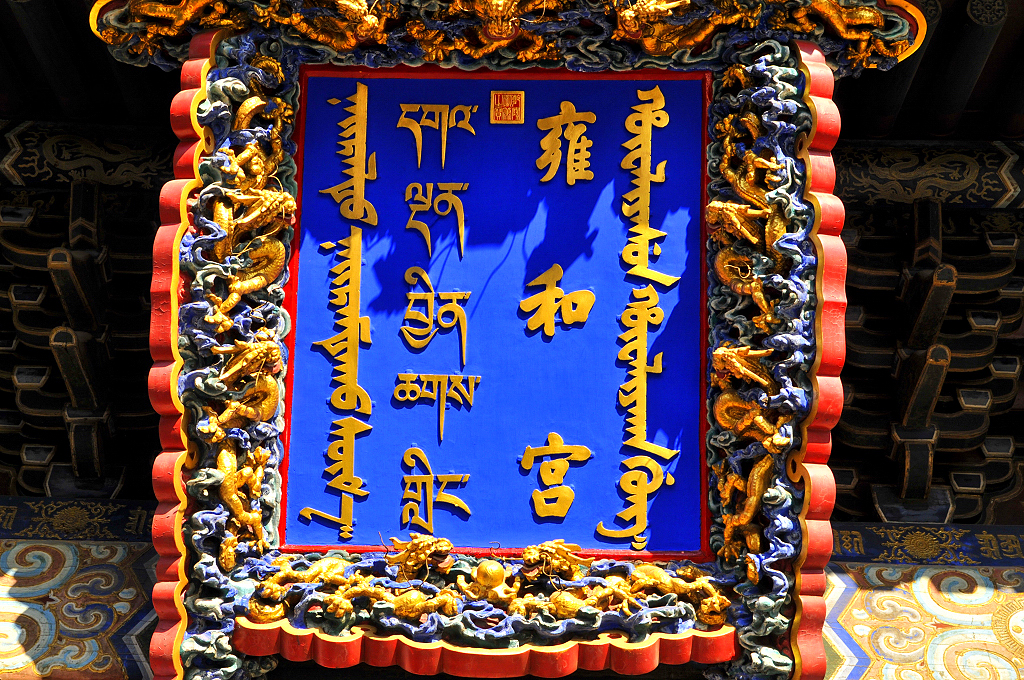
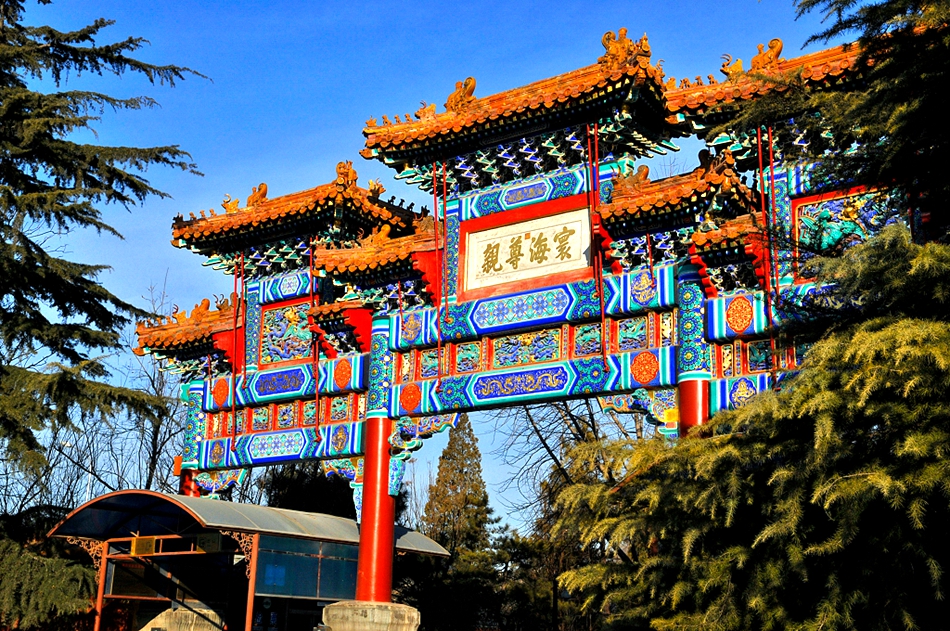

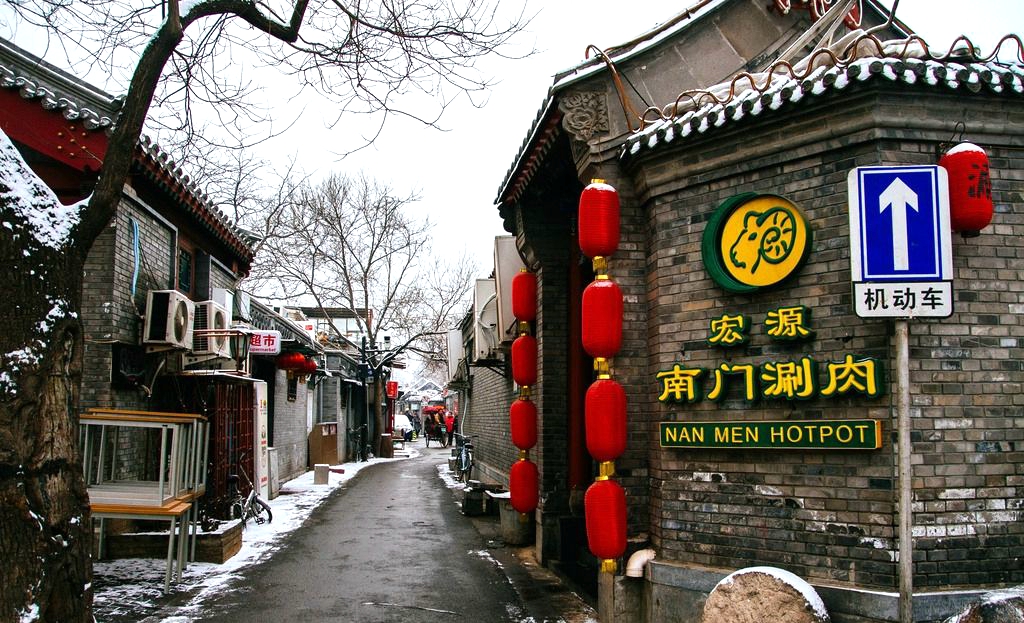
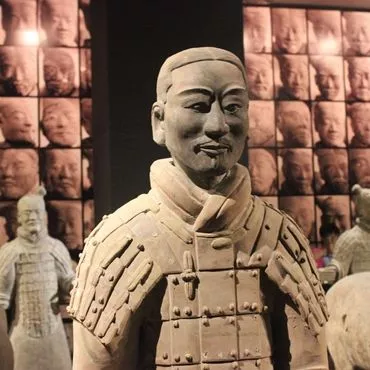
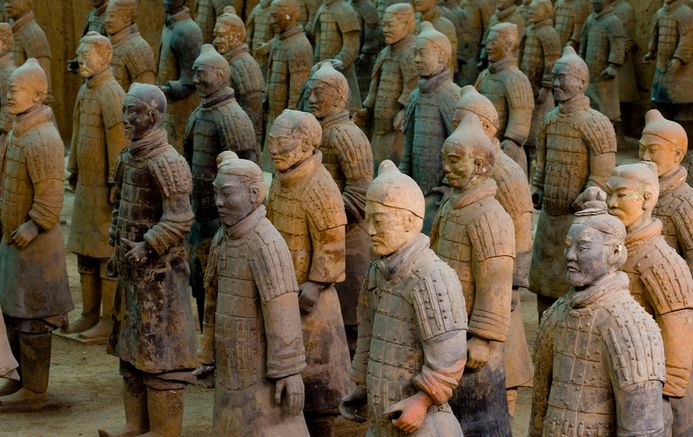
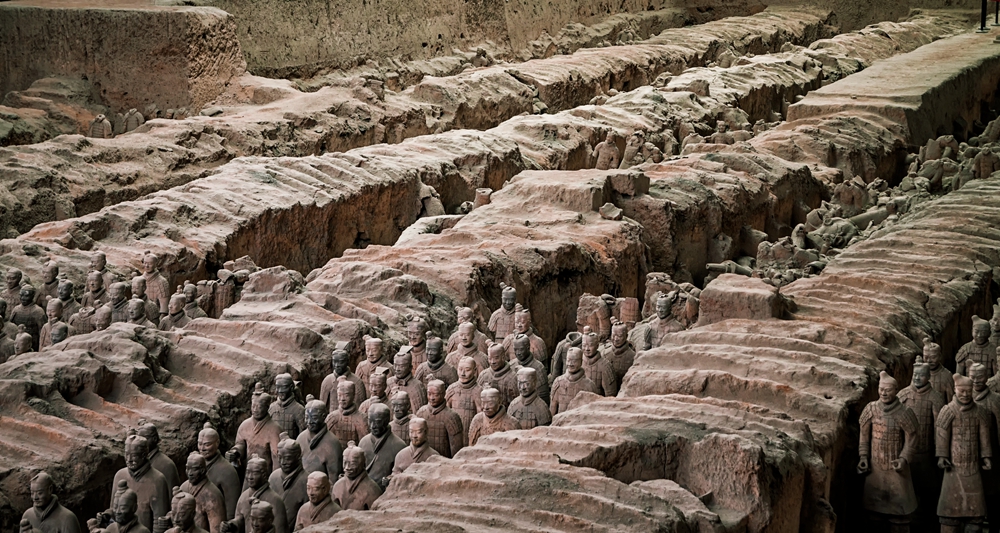

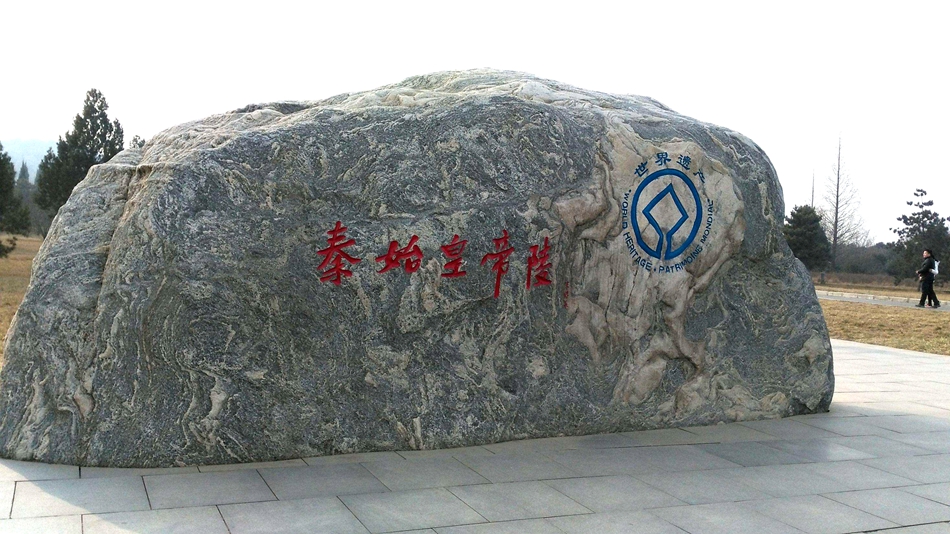
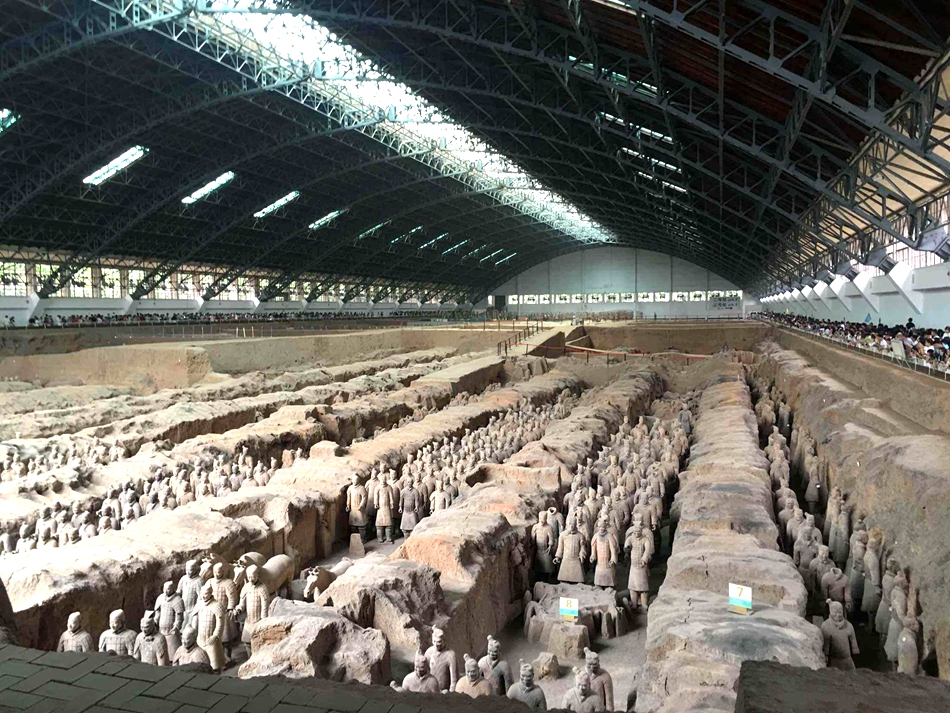
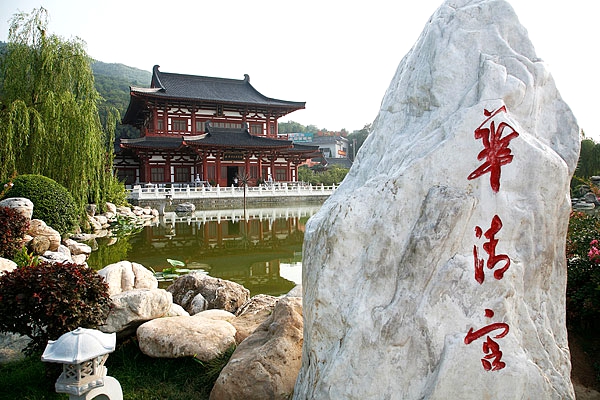
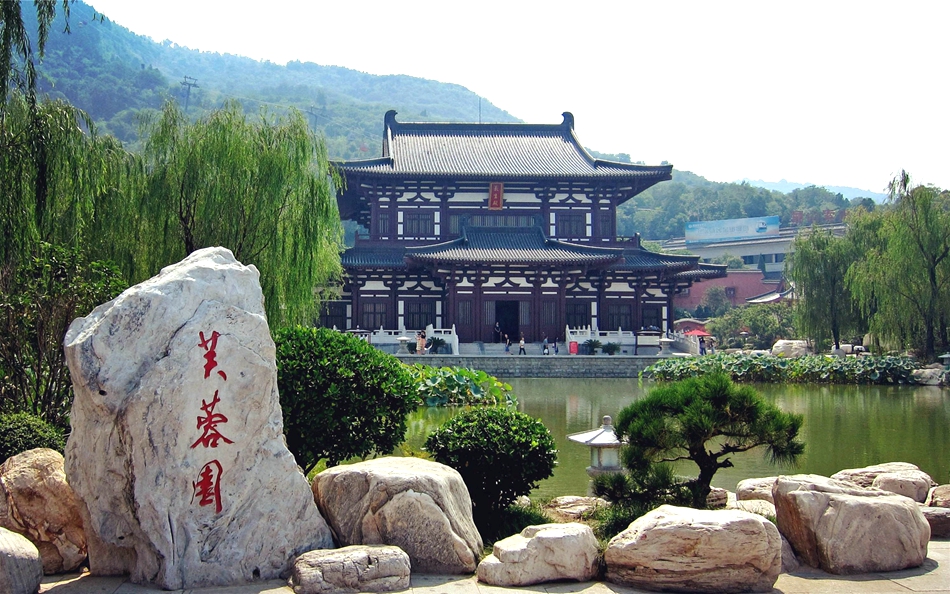
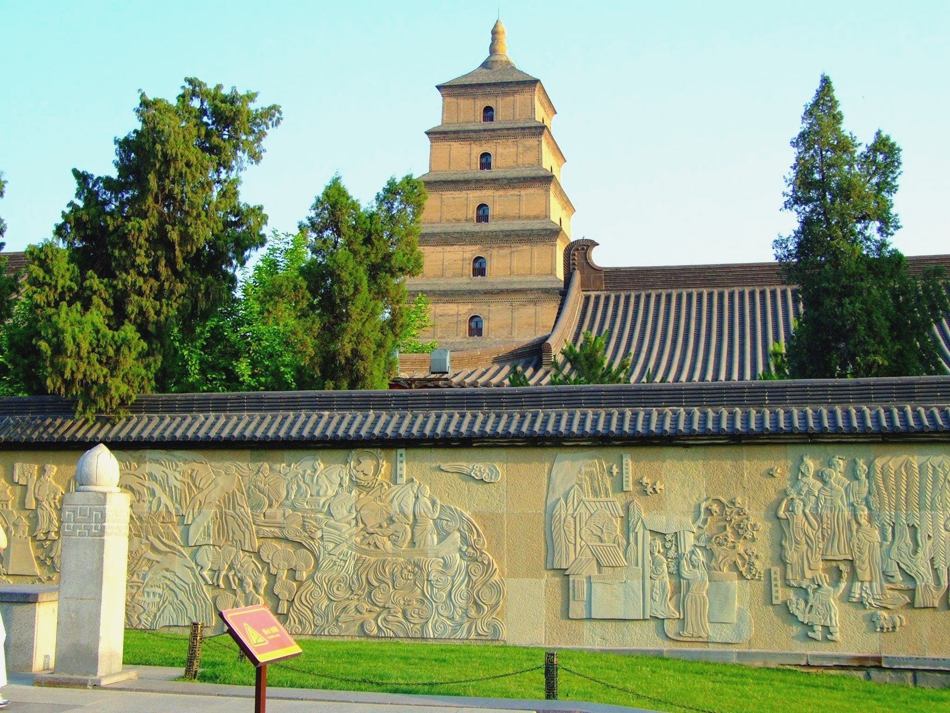
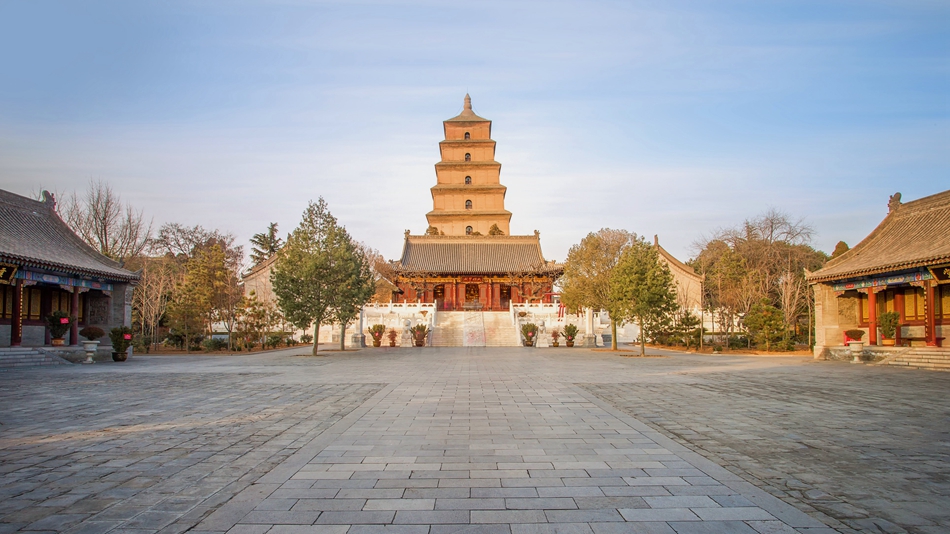
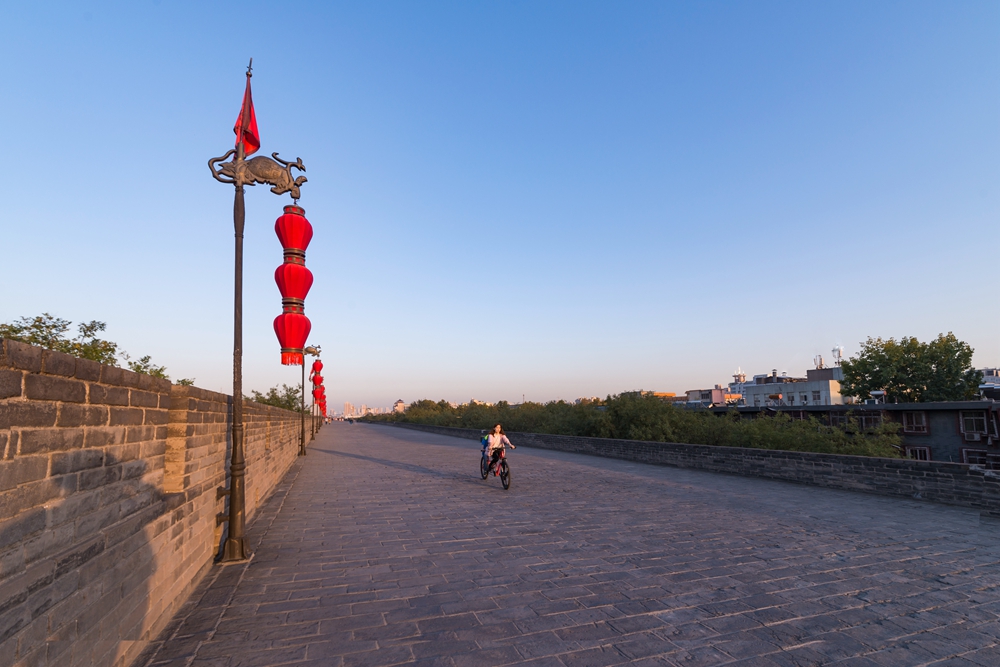
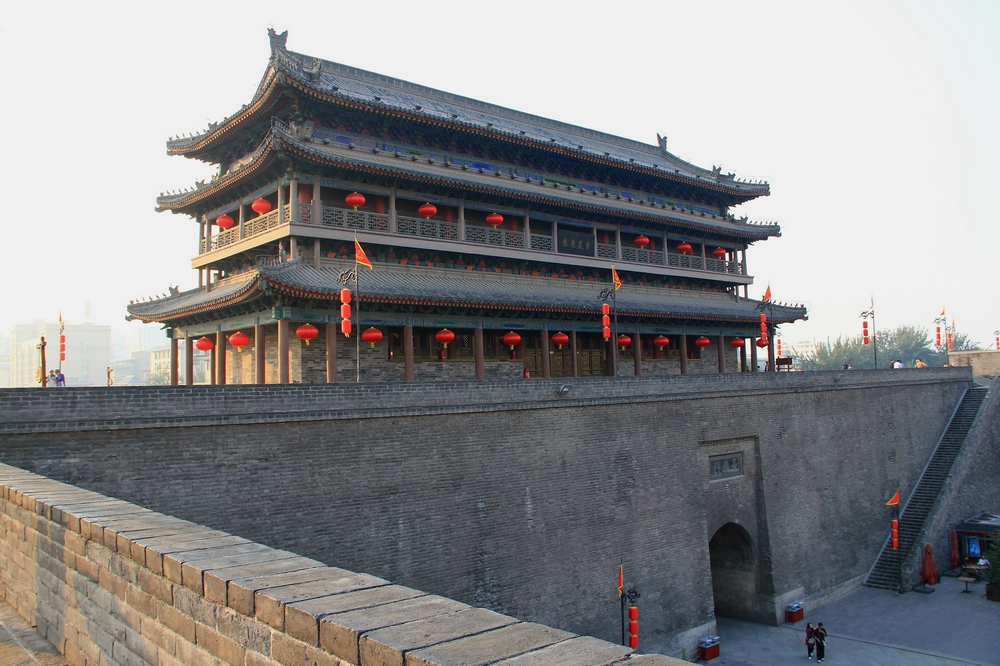
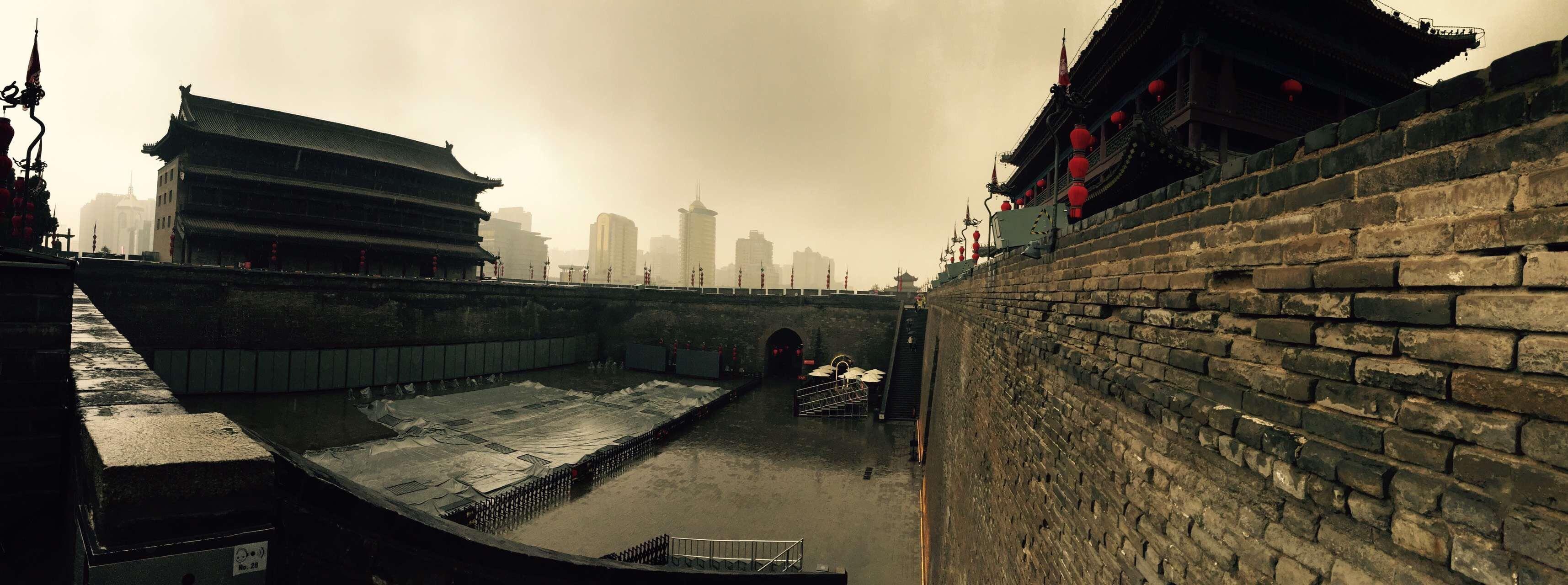
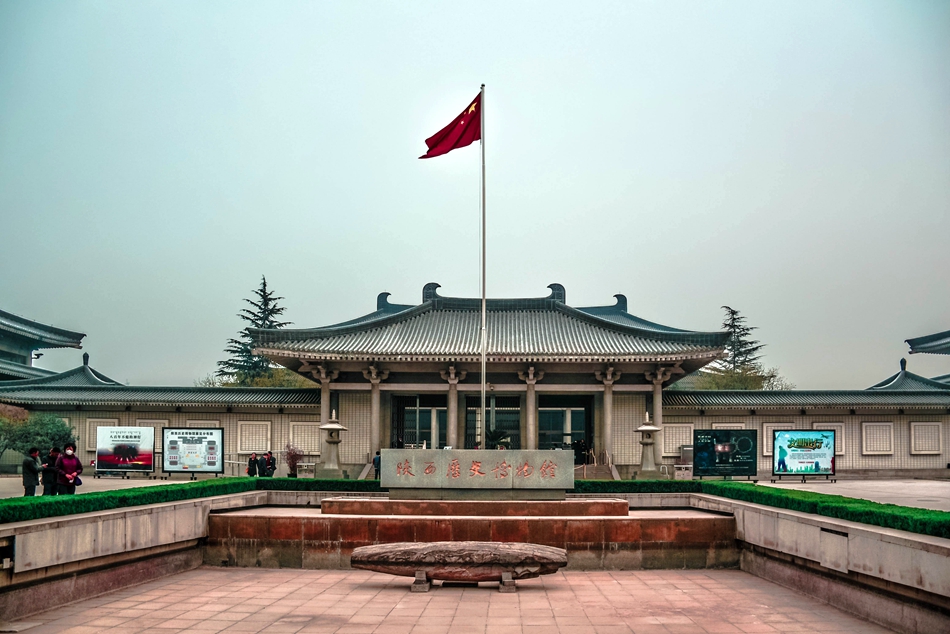
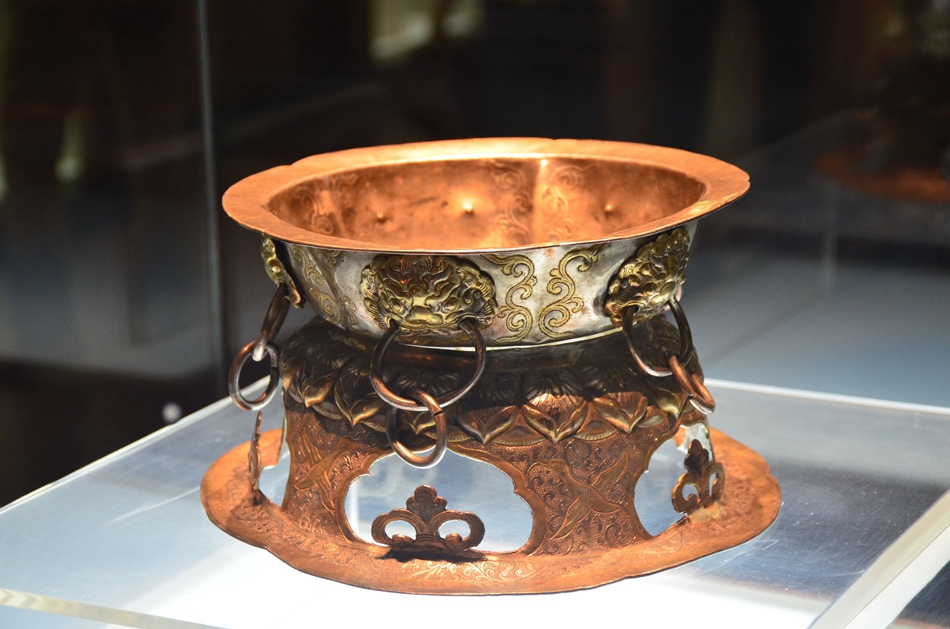
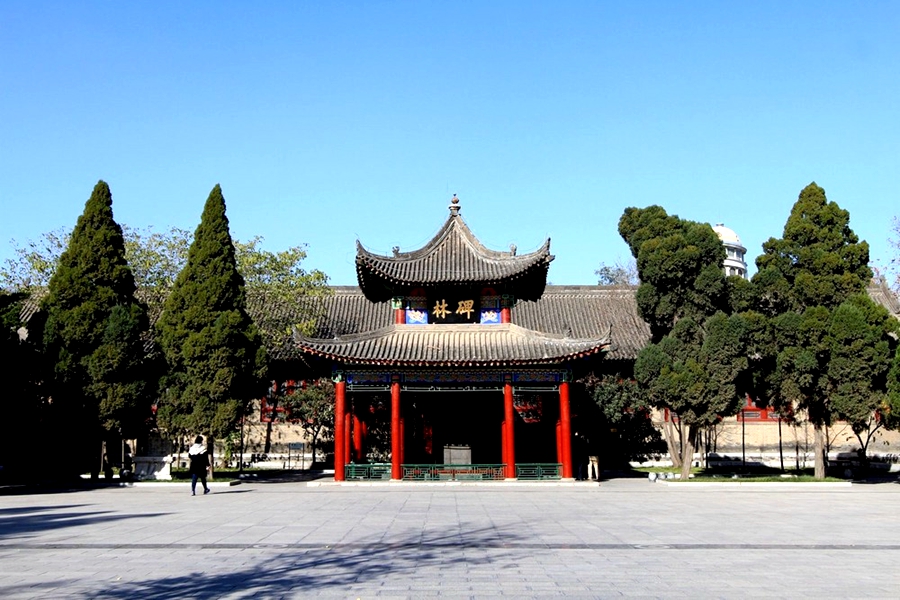


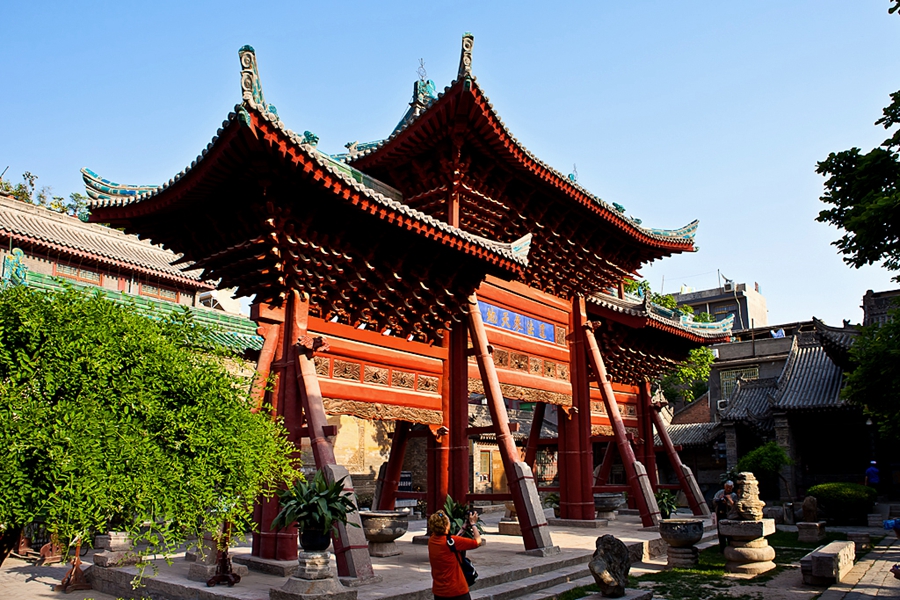
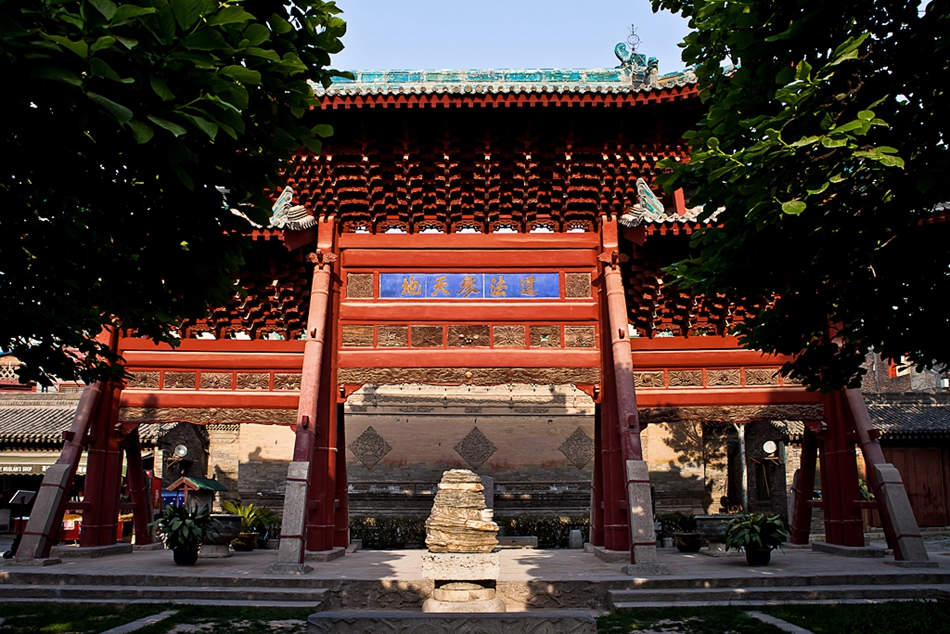
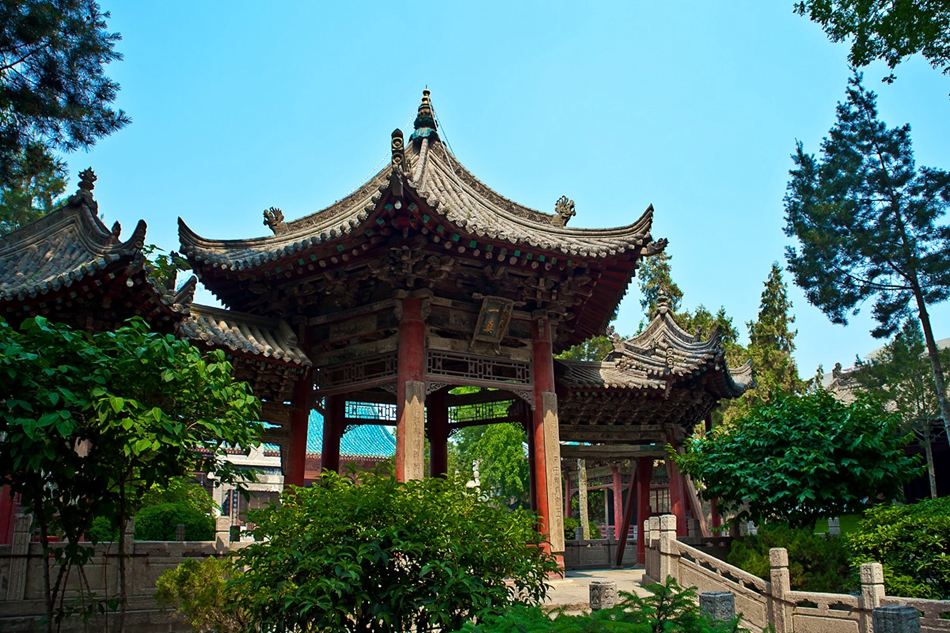
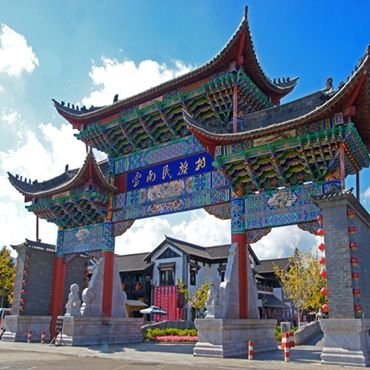
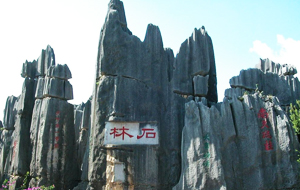
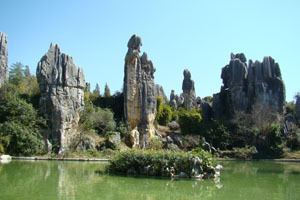
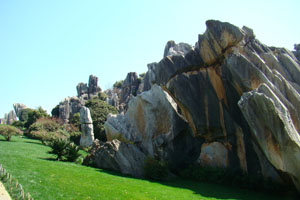
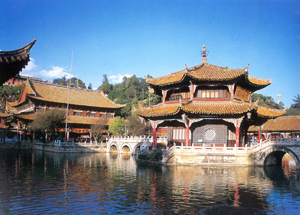
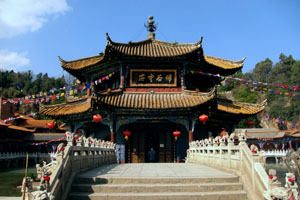
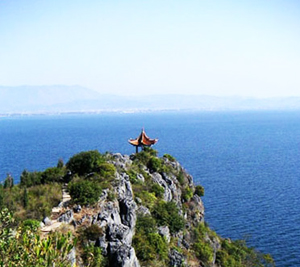
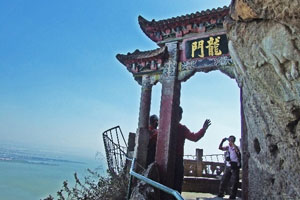
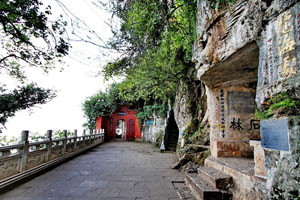
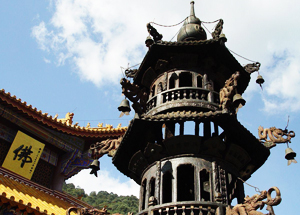
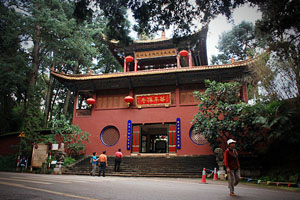
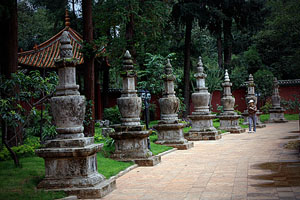
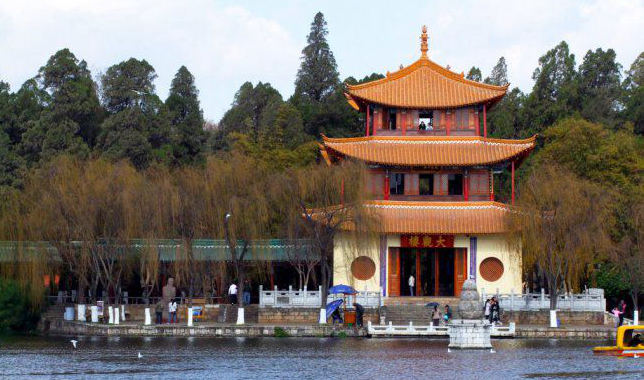
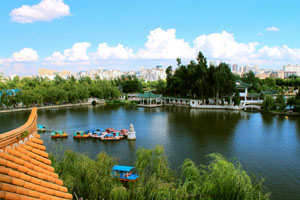
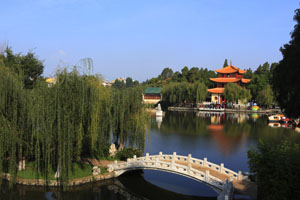
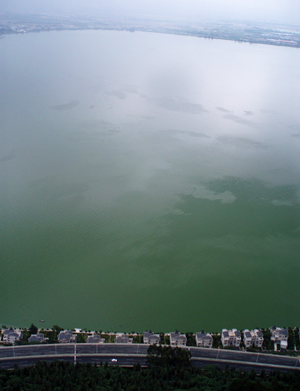
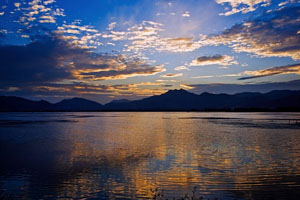

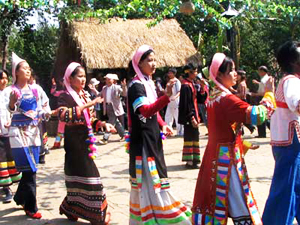

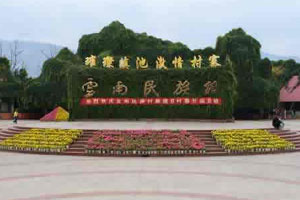
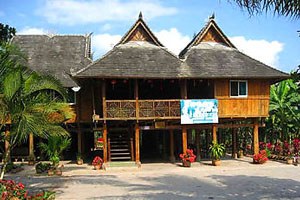

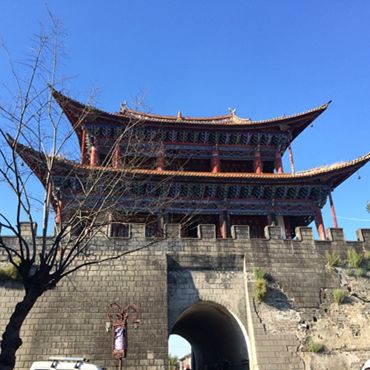
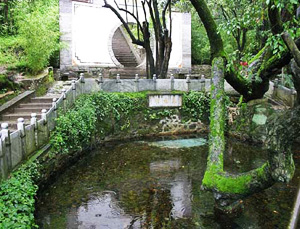
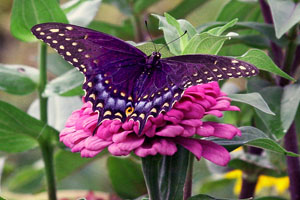
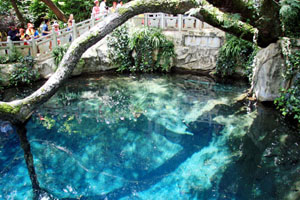
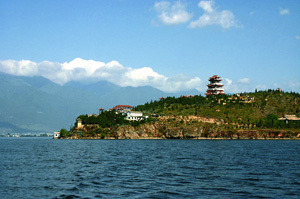
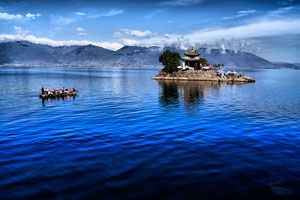

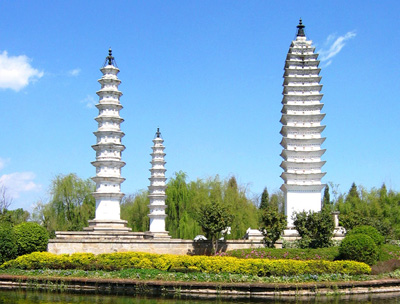
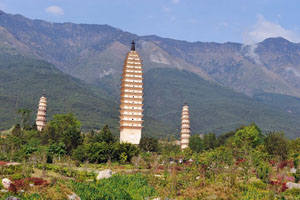
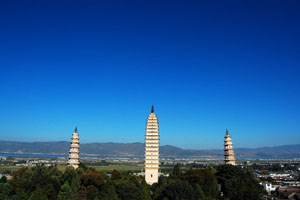
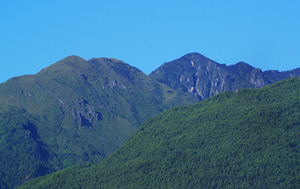

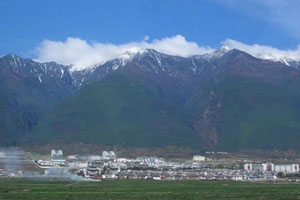

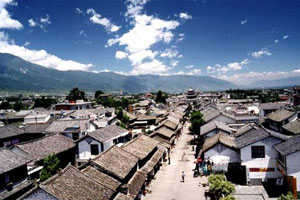

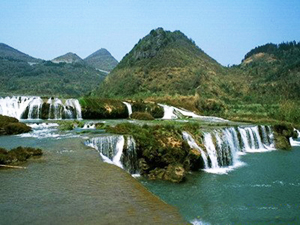
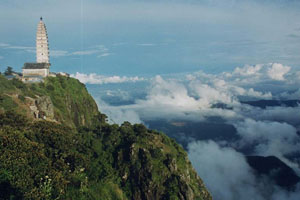
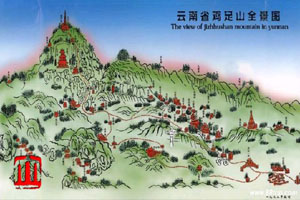
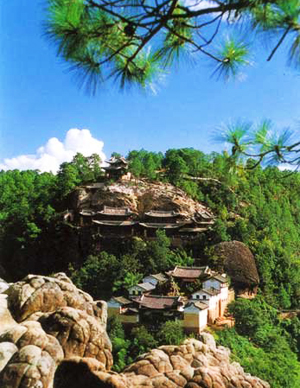
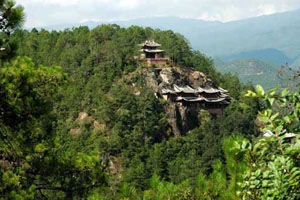
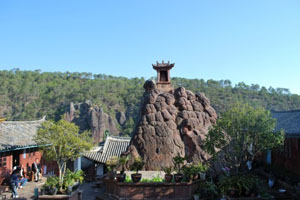
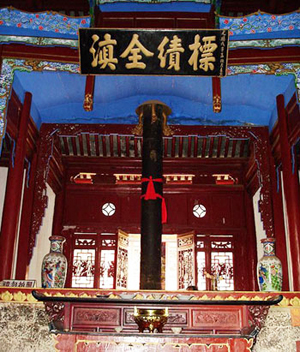
 The Iron Pillar is actually a pillar made of iron in the Tiezhu Temple in Midu County. With a tallness of 3.3 meters, a circumference of 1 meter and weight of 2 tons, the iron pillar, has witnessed 1100 years of changes, is the oldest and famous historic relic in Midu County. The Iron Pillar is said to be cast by using the confiscated weapons at the order of Zhuge Liang, the most brilliant military consular in Three Kingdoms period (220-280).
The Iron Pillar is actually a pillar made of iron in the Tiezhu Temple in Midu County. With a tallness of 3.3 meters, a circumference of 1 meter and weight of 2 tons, the iron pillar, has witnessed 1100 years of changes, is the oldest and famous historic relic in Midu County. The Iron Pillar is said to be cast by using the confiscated weapons at the order of Zhuge Liang, the most brilliant military consular in Three Kingdoms period (220-280).
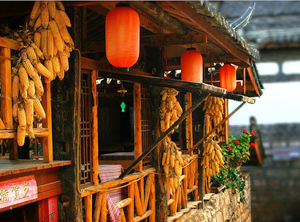
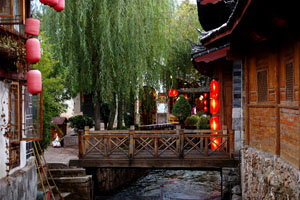
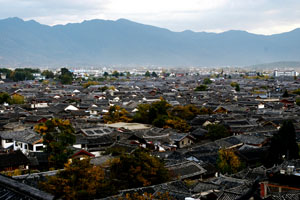
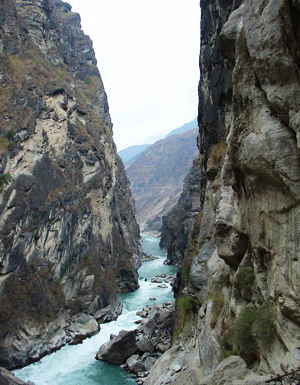
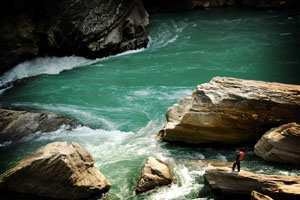
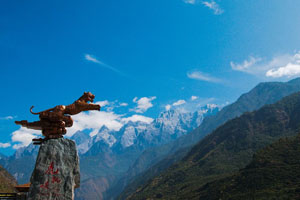
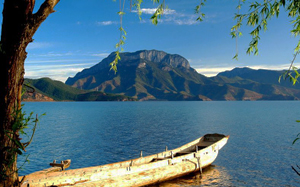

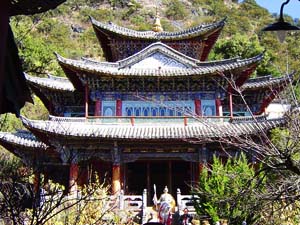
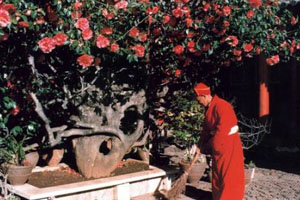
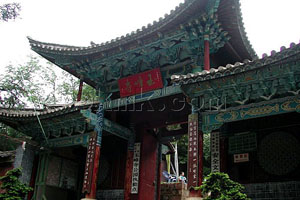
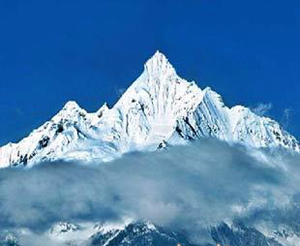
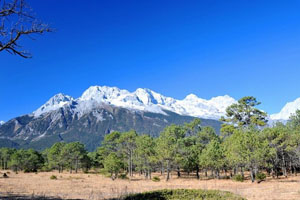
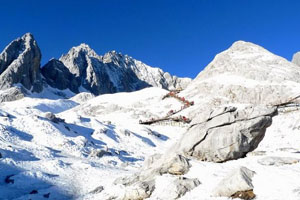
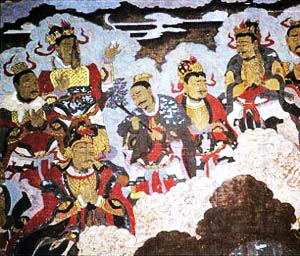
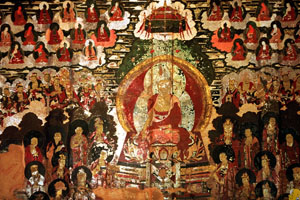 The Baisha Mural is a group of murals scattered around Lijiang City, which took 300 years to complete, therefore it is a reflection of the true life in the late Ming Dynasty and early Qing Dynasty. Having been undergone over 500 years of history, part of the Baisha mural group somewhat becomes indistinct, but a large part of which still can tell you about the culture of Buddhism, Confucianism and Taoism.
The Baisha Mural is a group of murals scattered around Lijiang City, which took 300 years to complete, therefore it is a reflection of the true life in the late Ming Dynasty and early Qing Dynasty. Having been undergone over 500 years of history, part of the Baisha mural group somewhat becomes indistinct, but a large part of which still can tell you about the culture of Buddhism, Confucianism and Taoism.